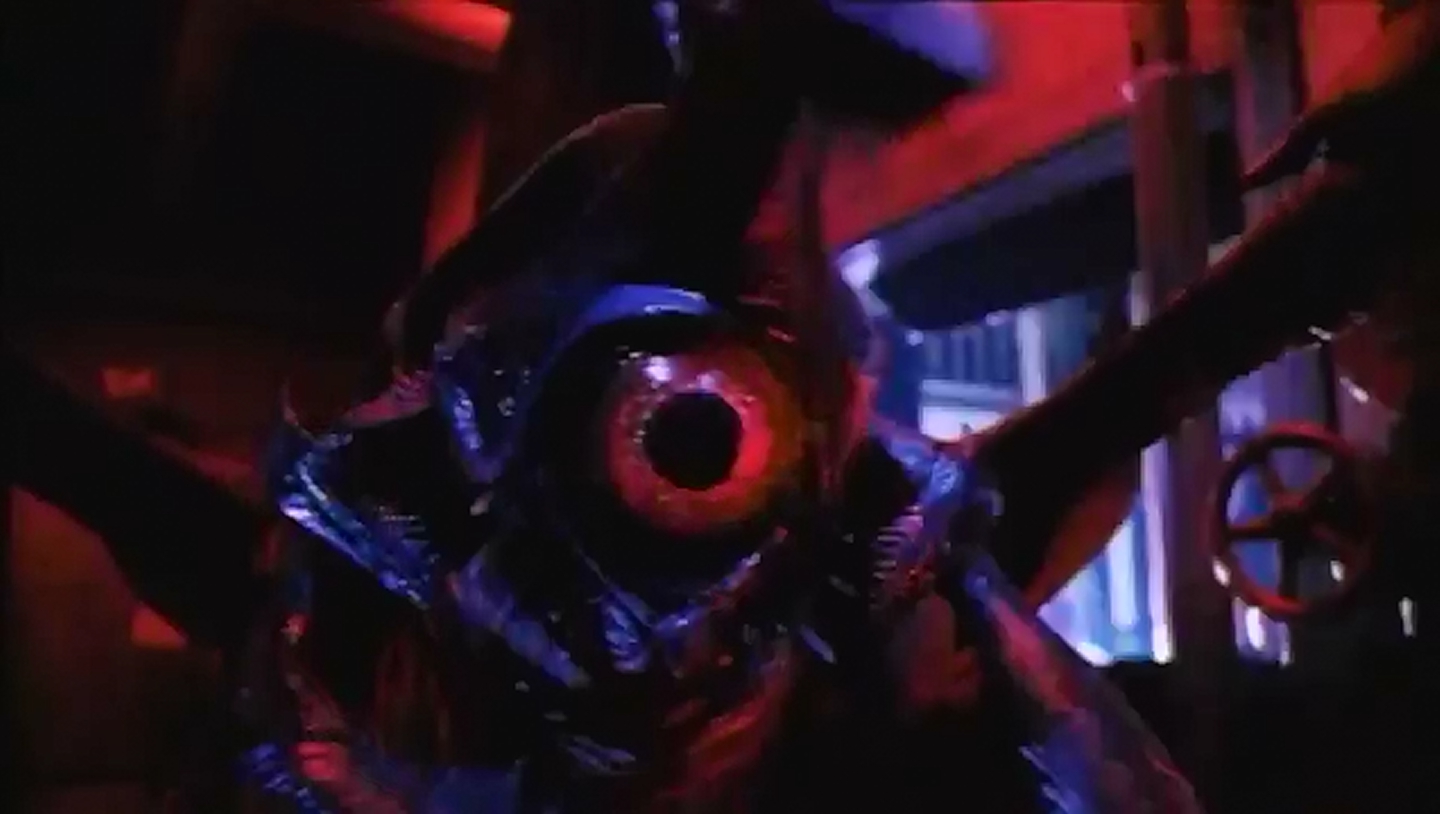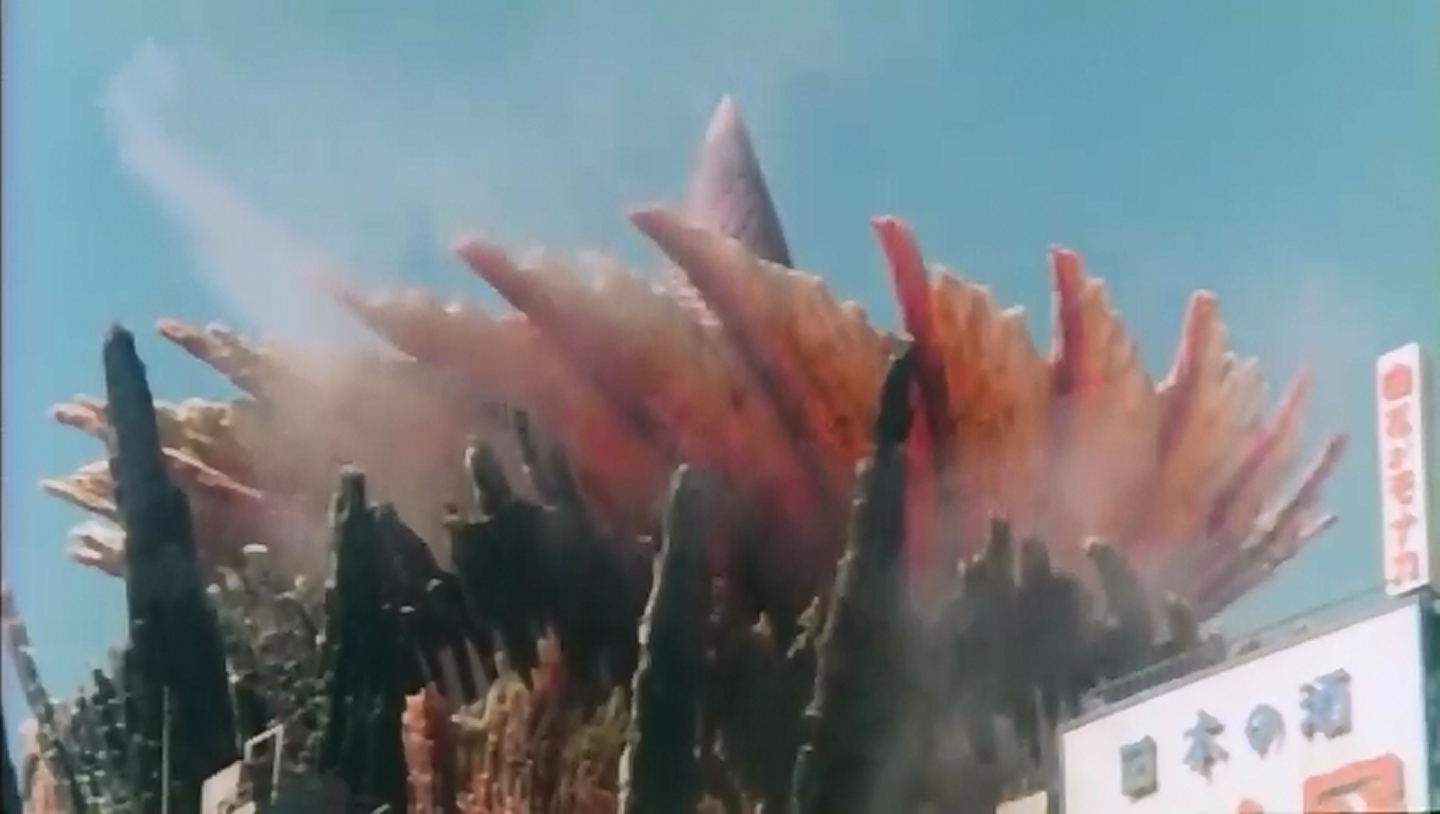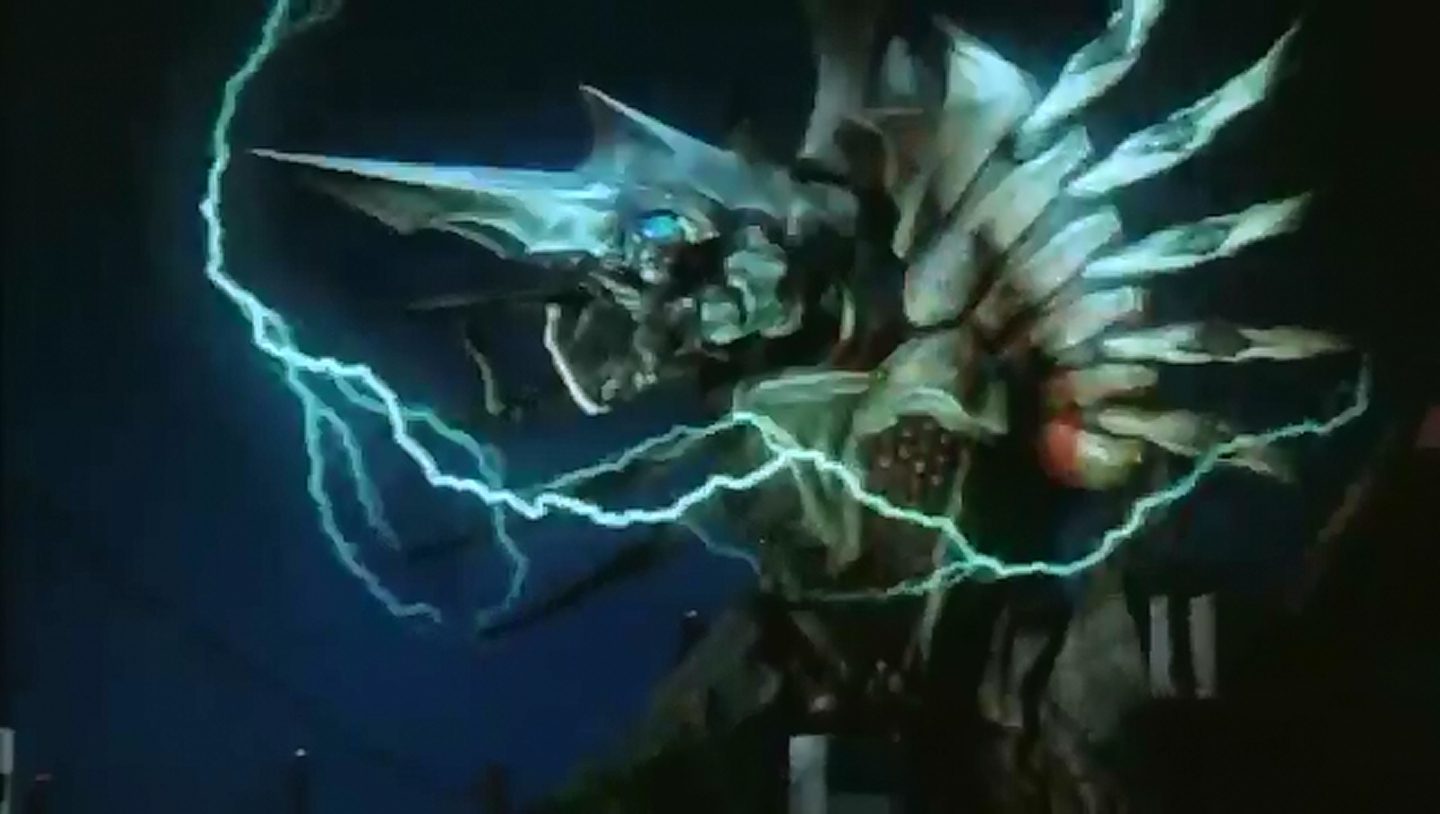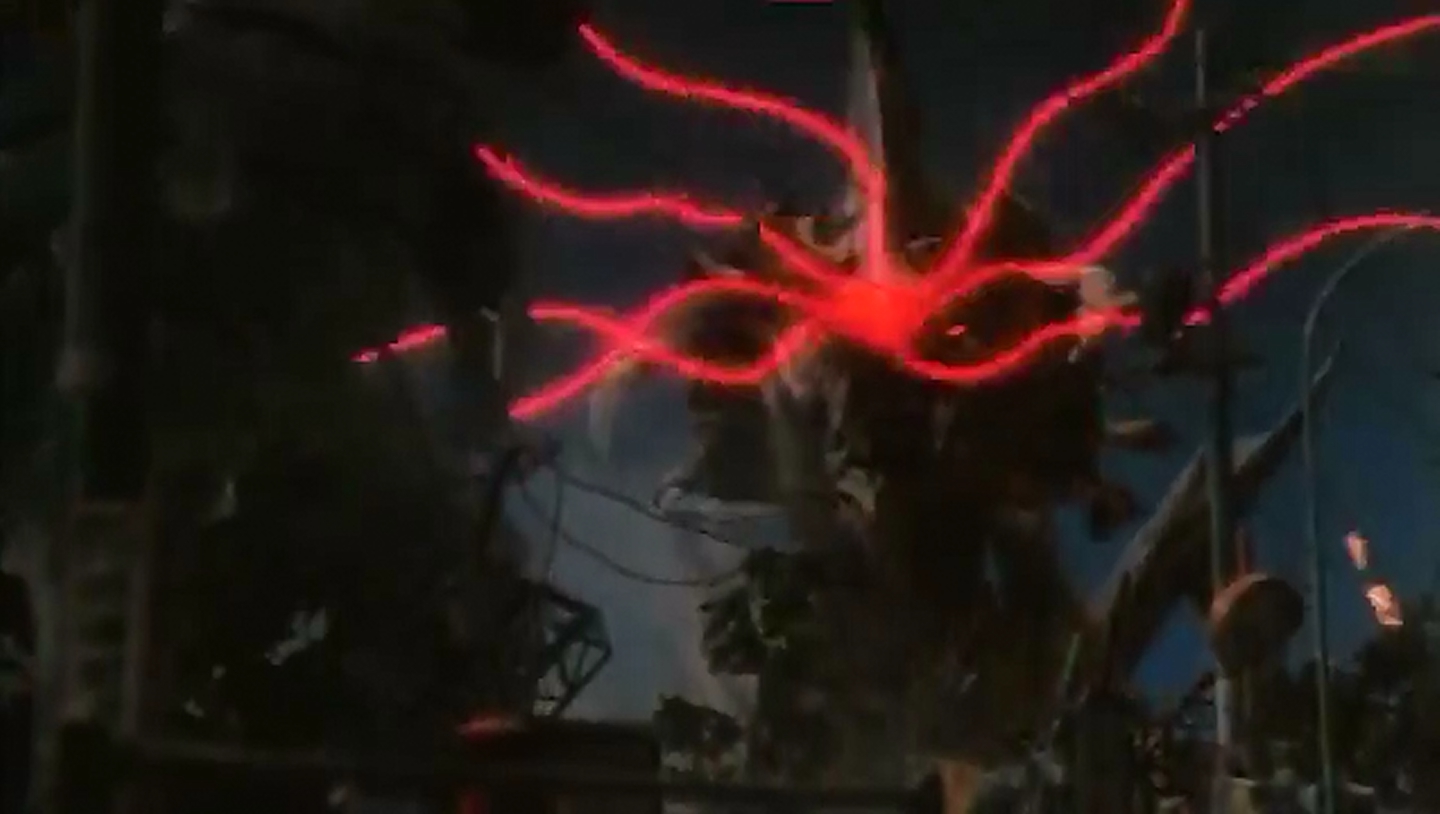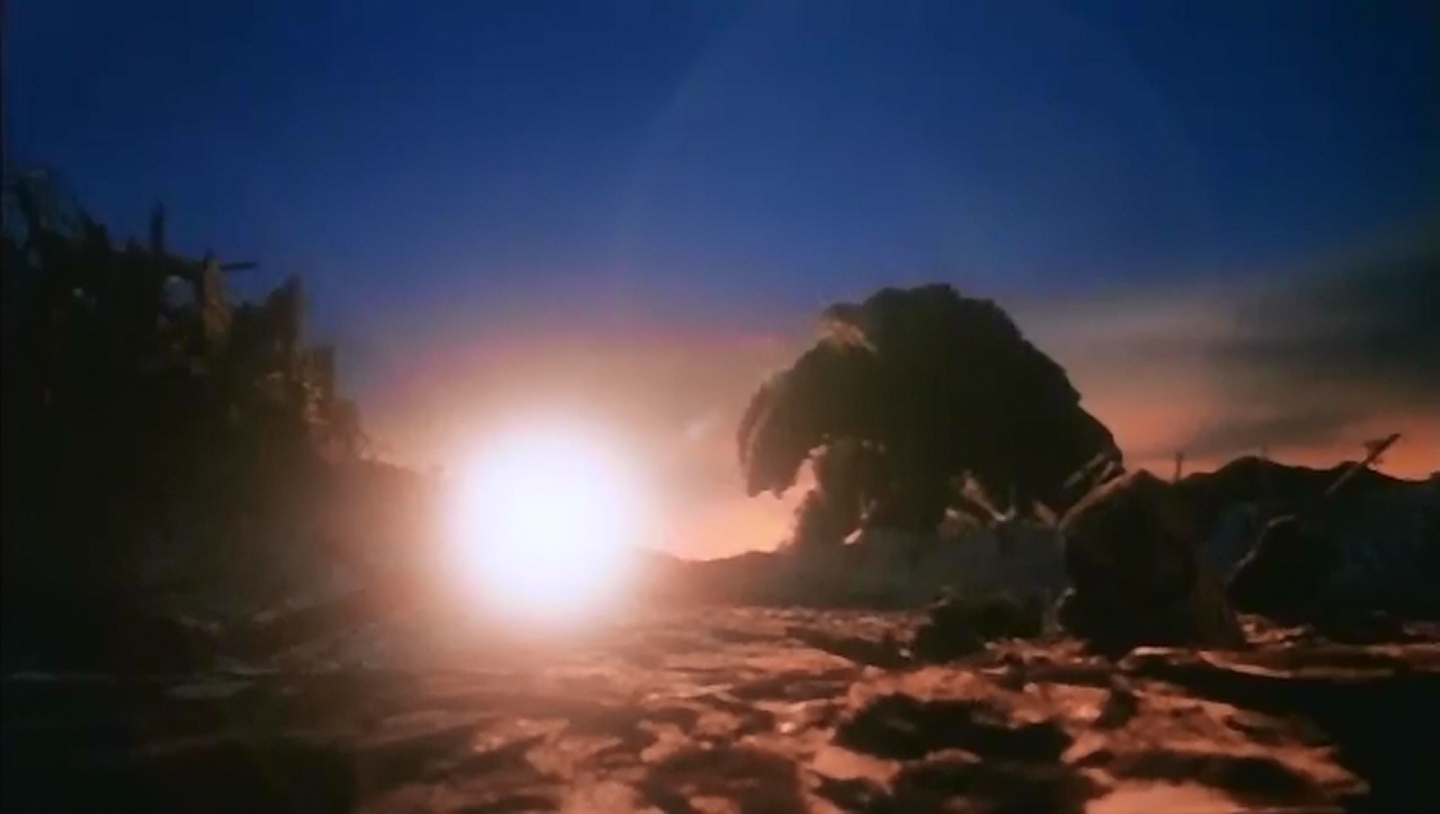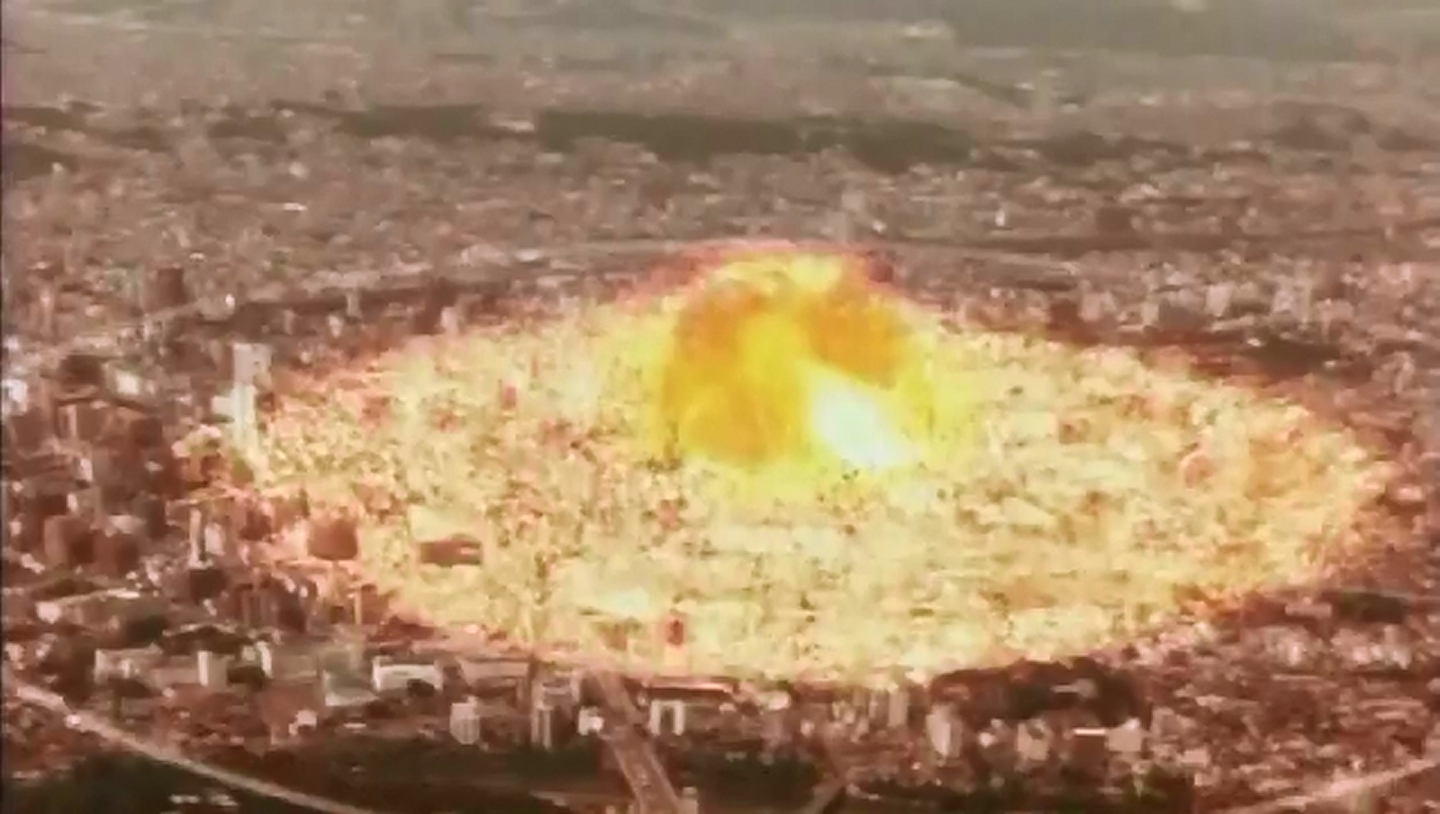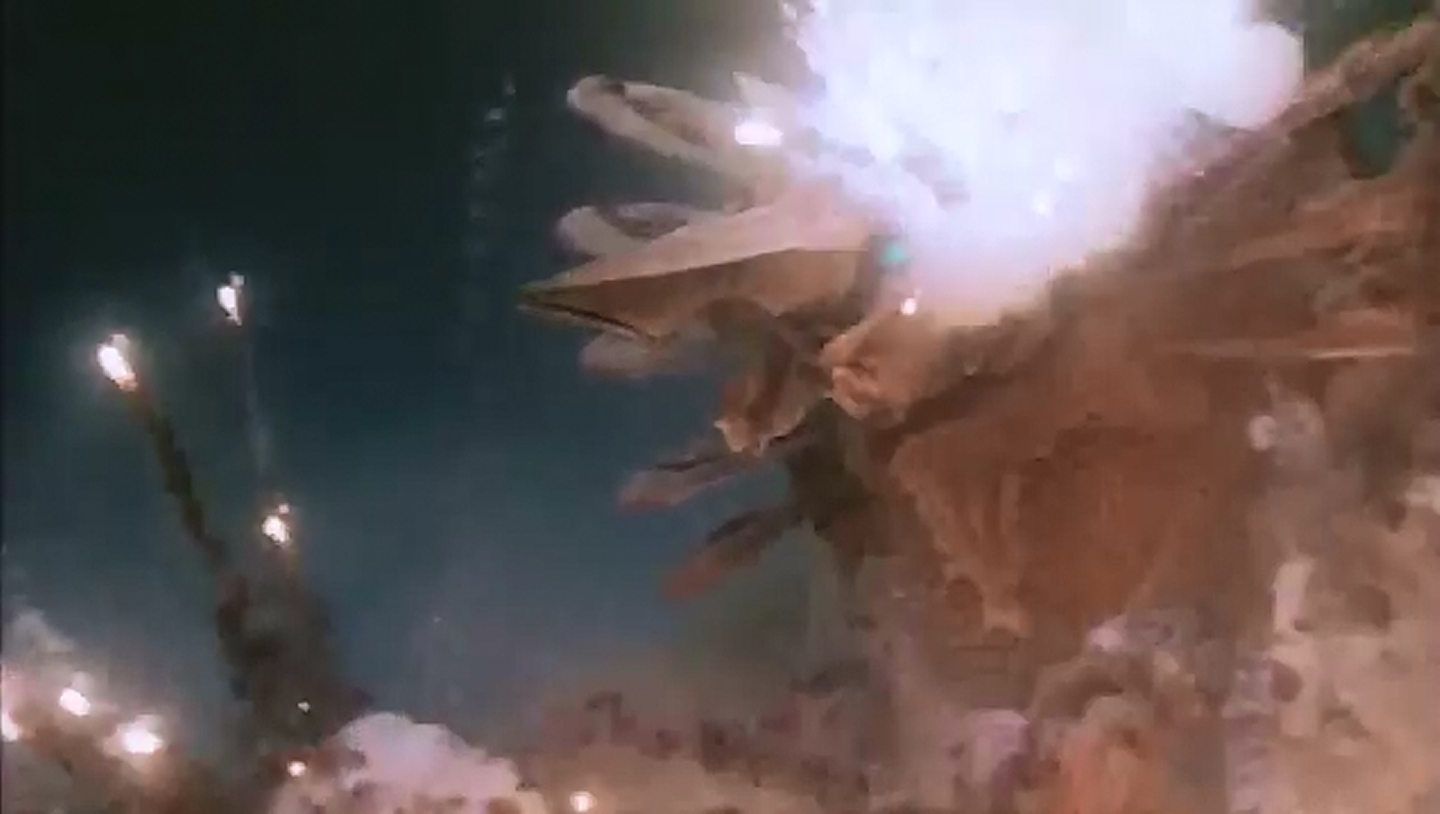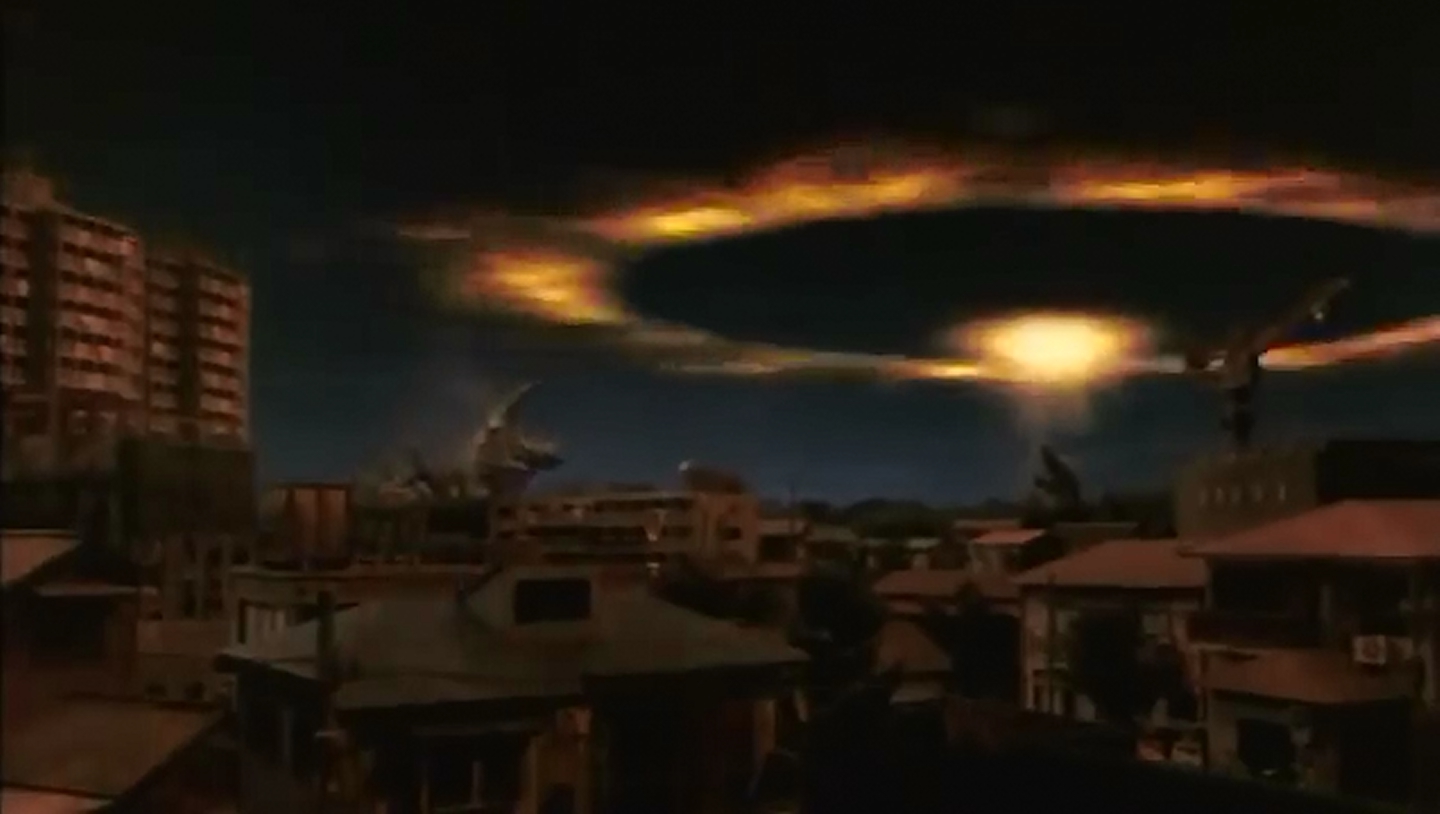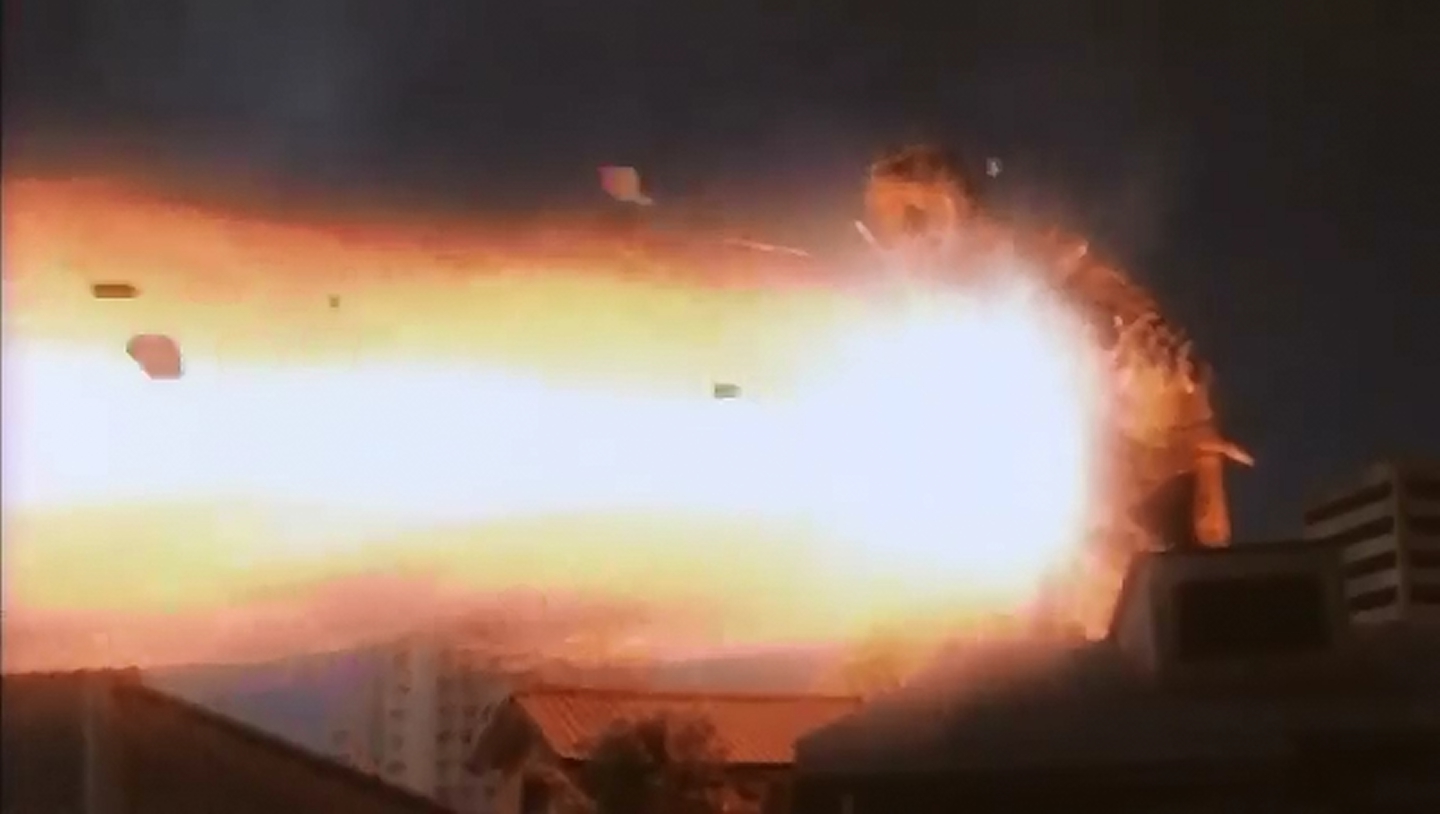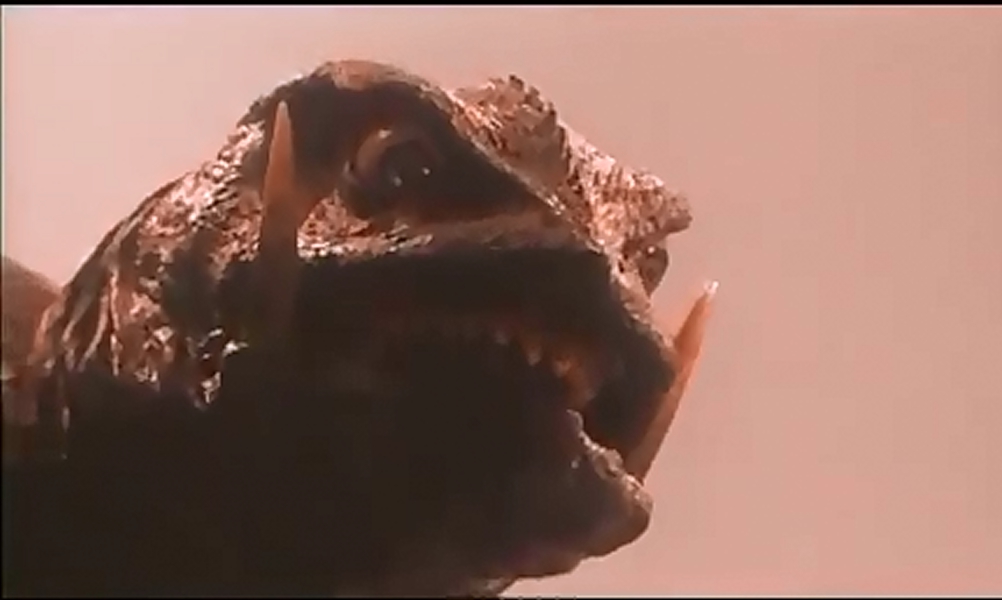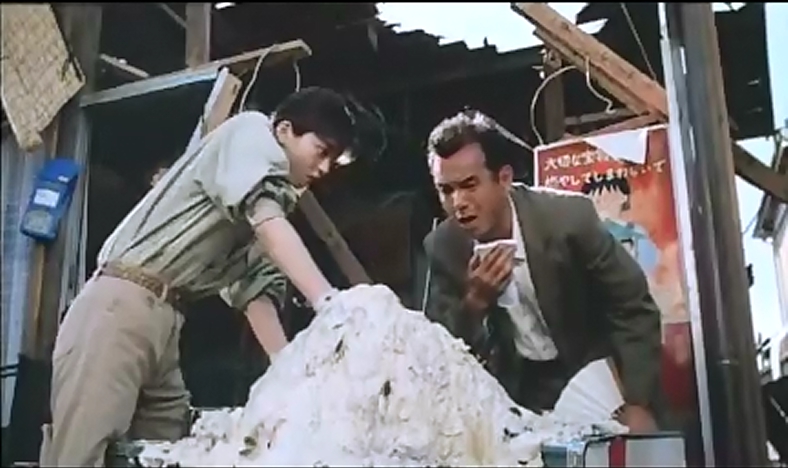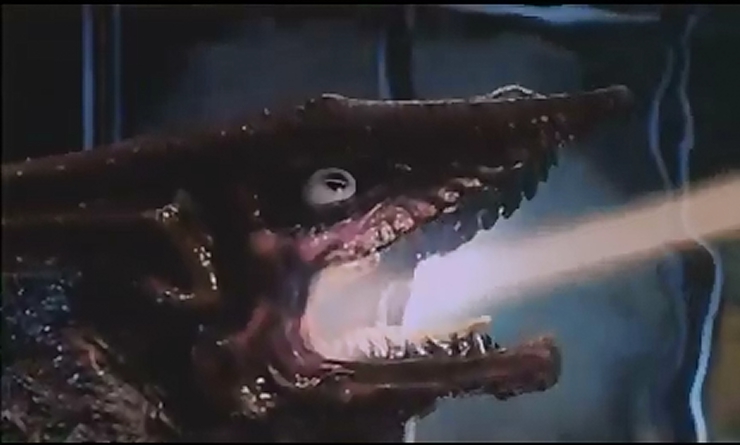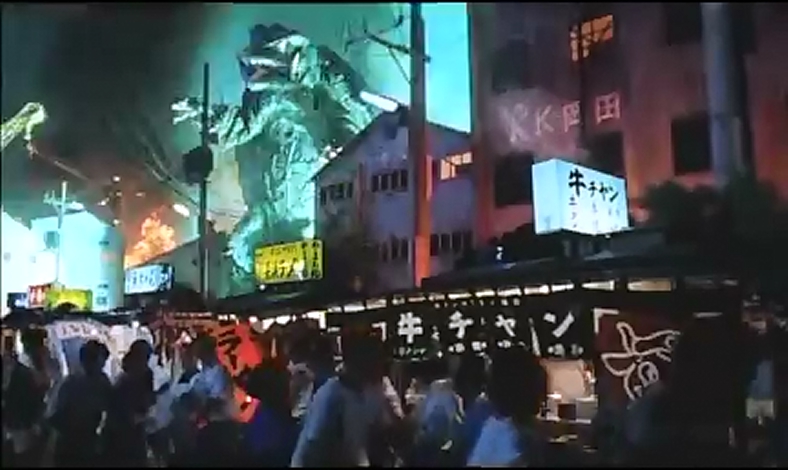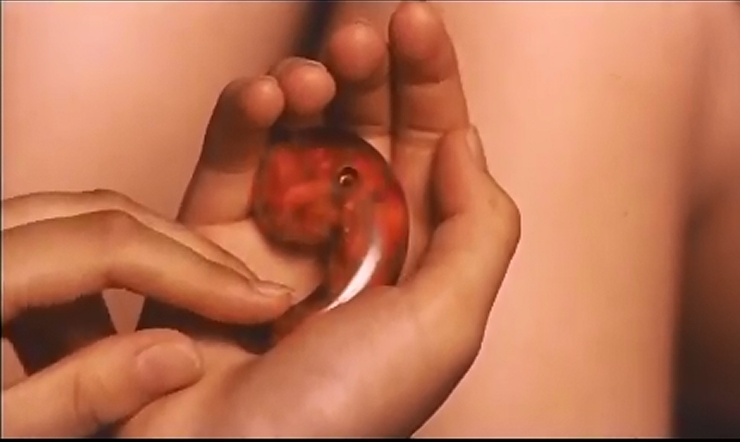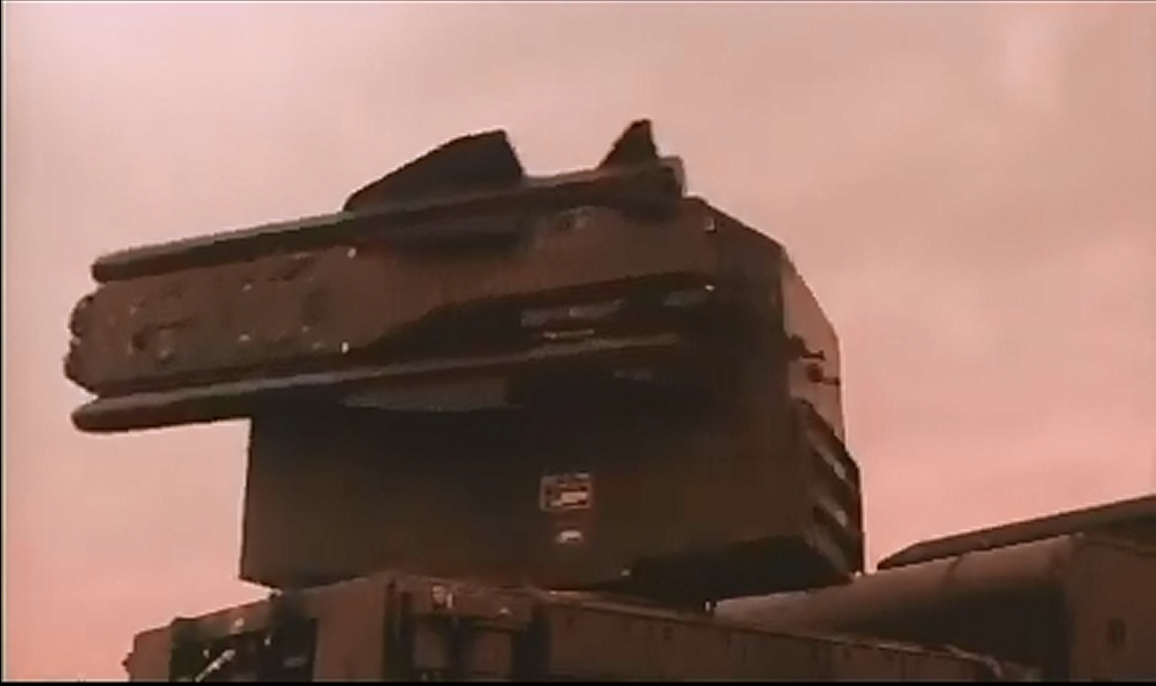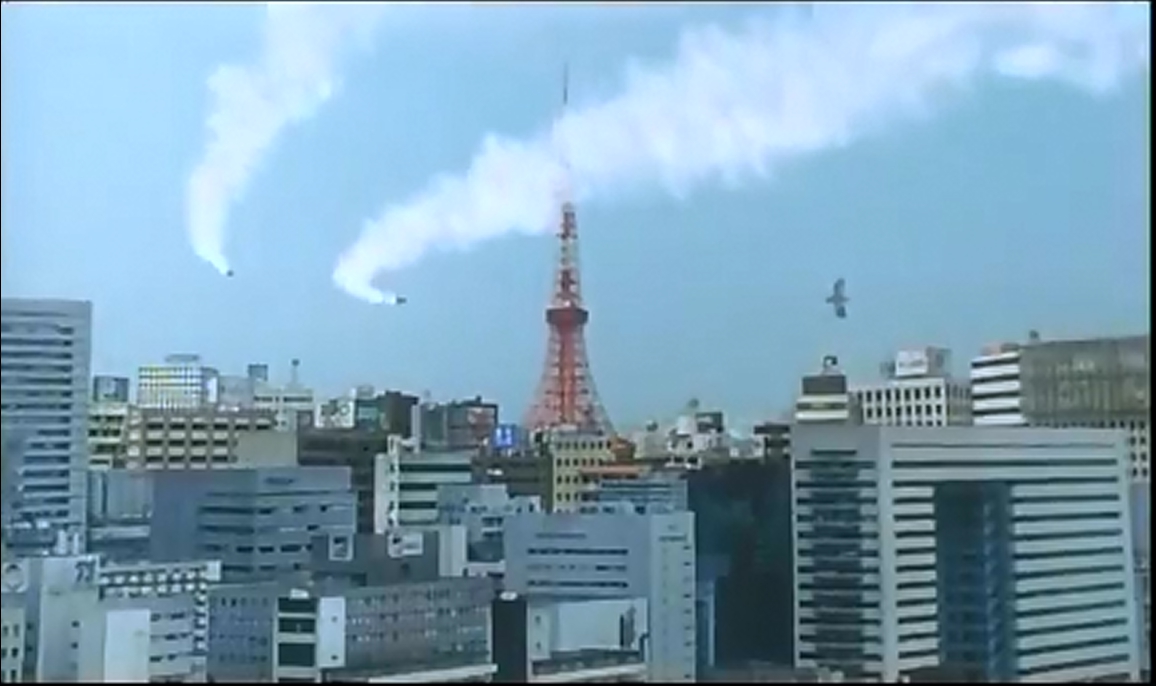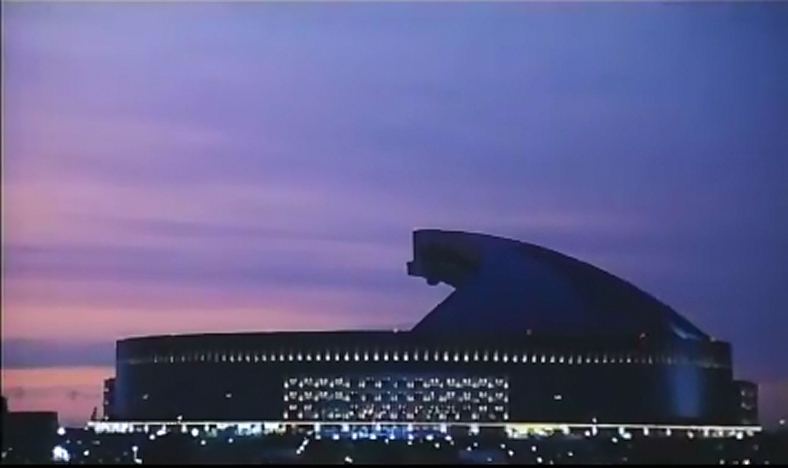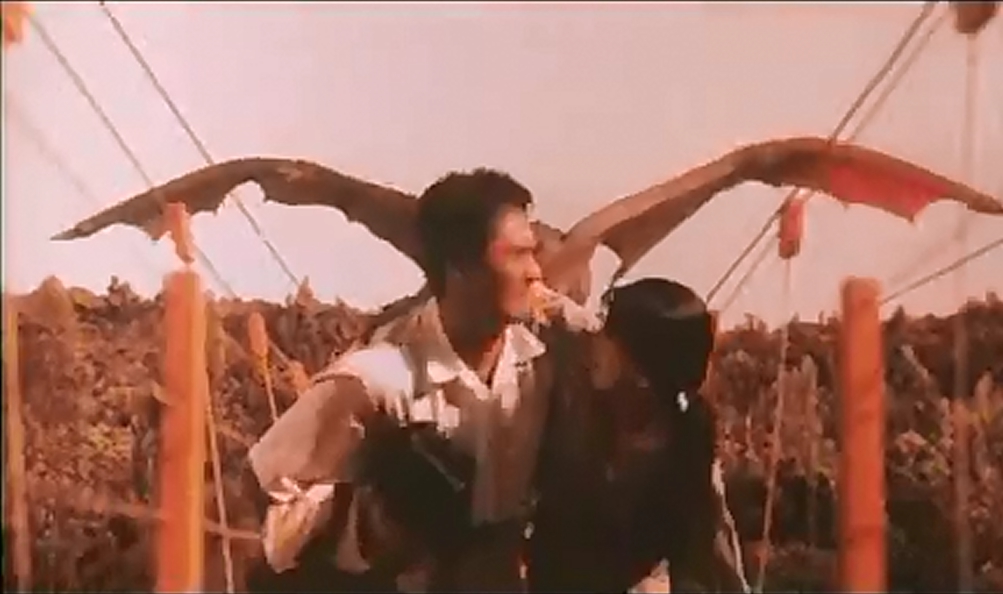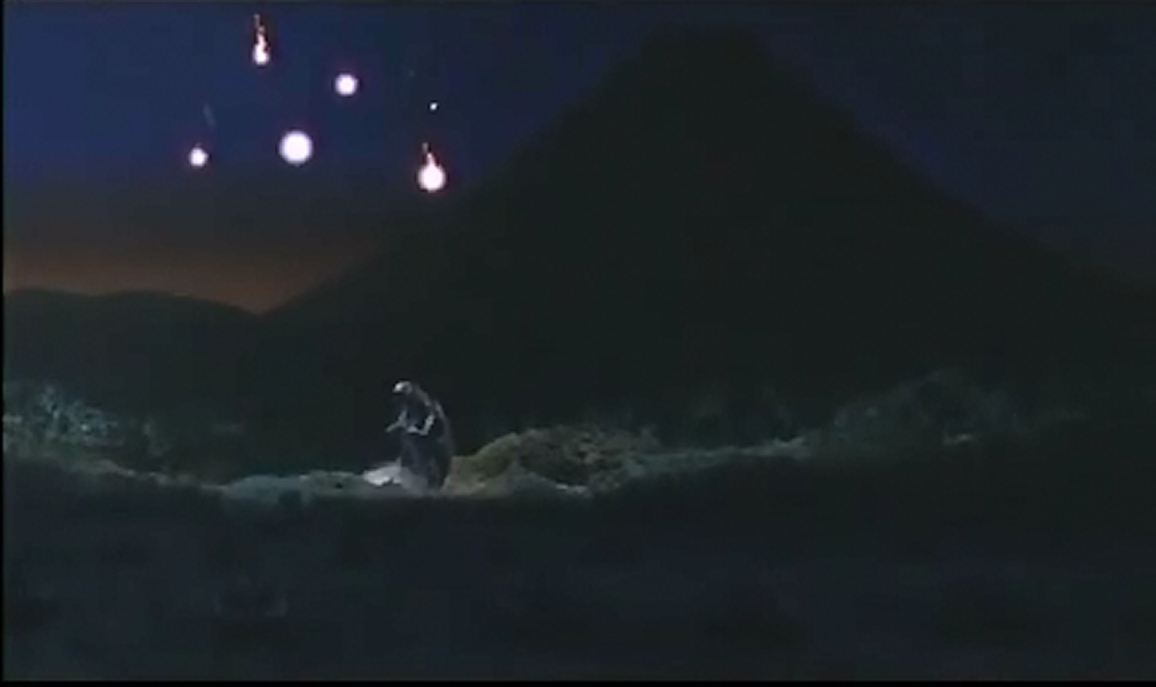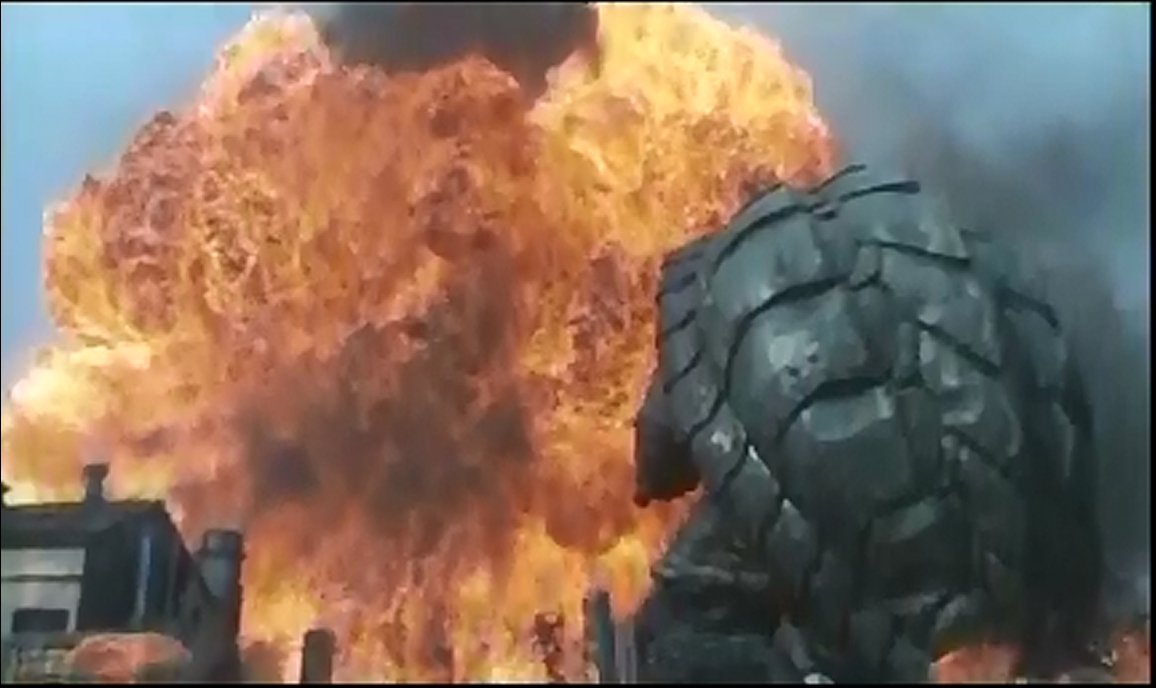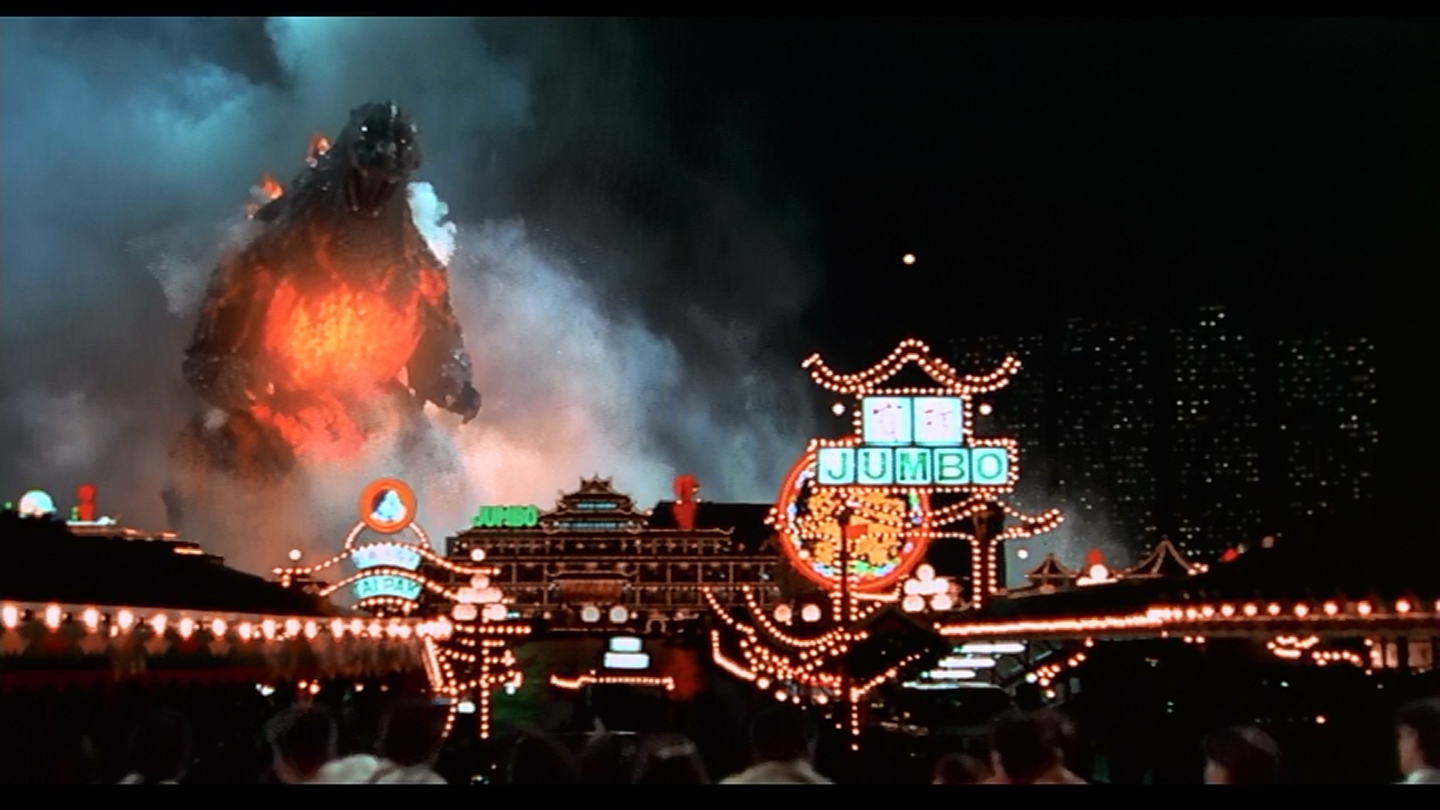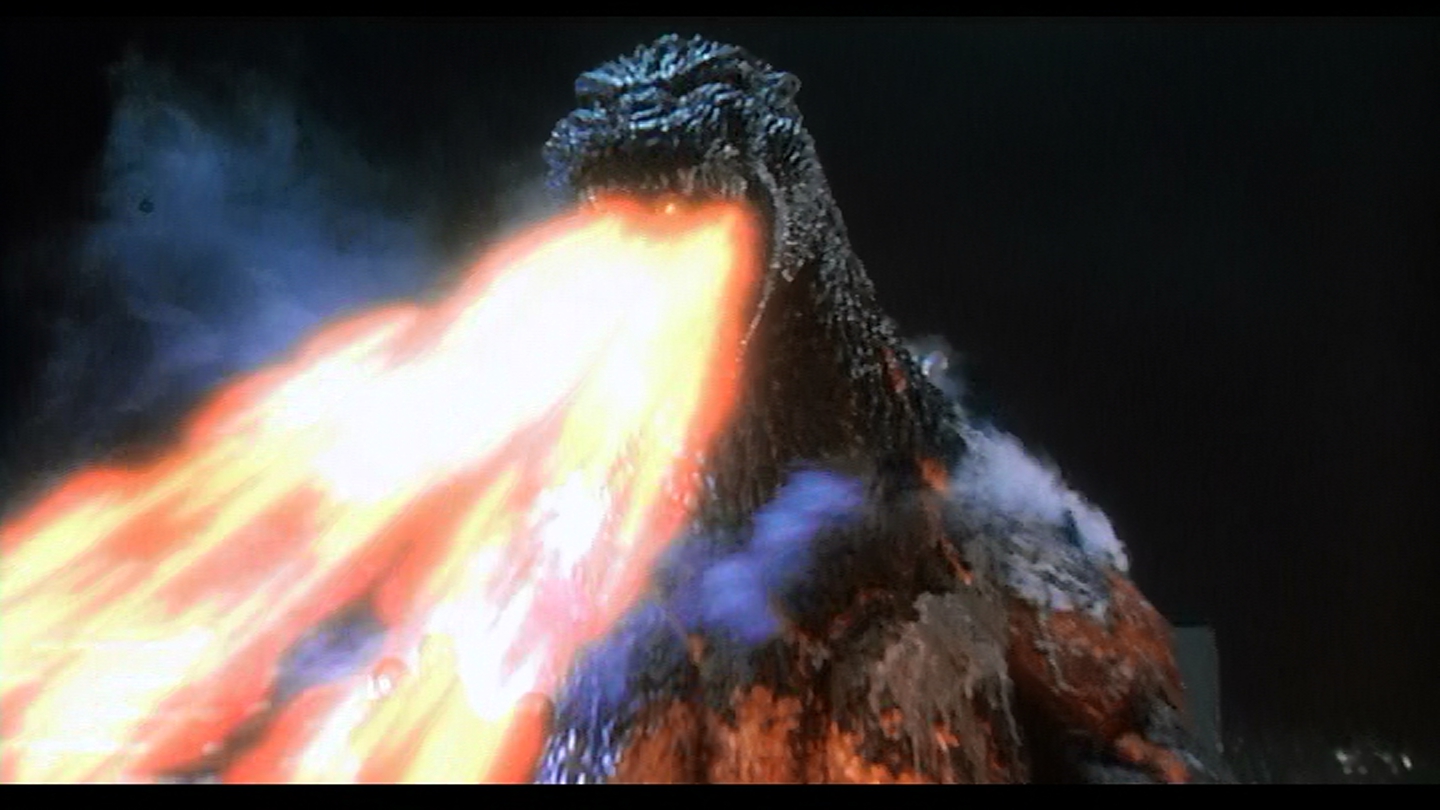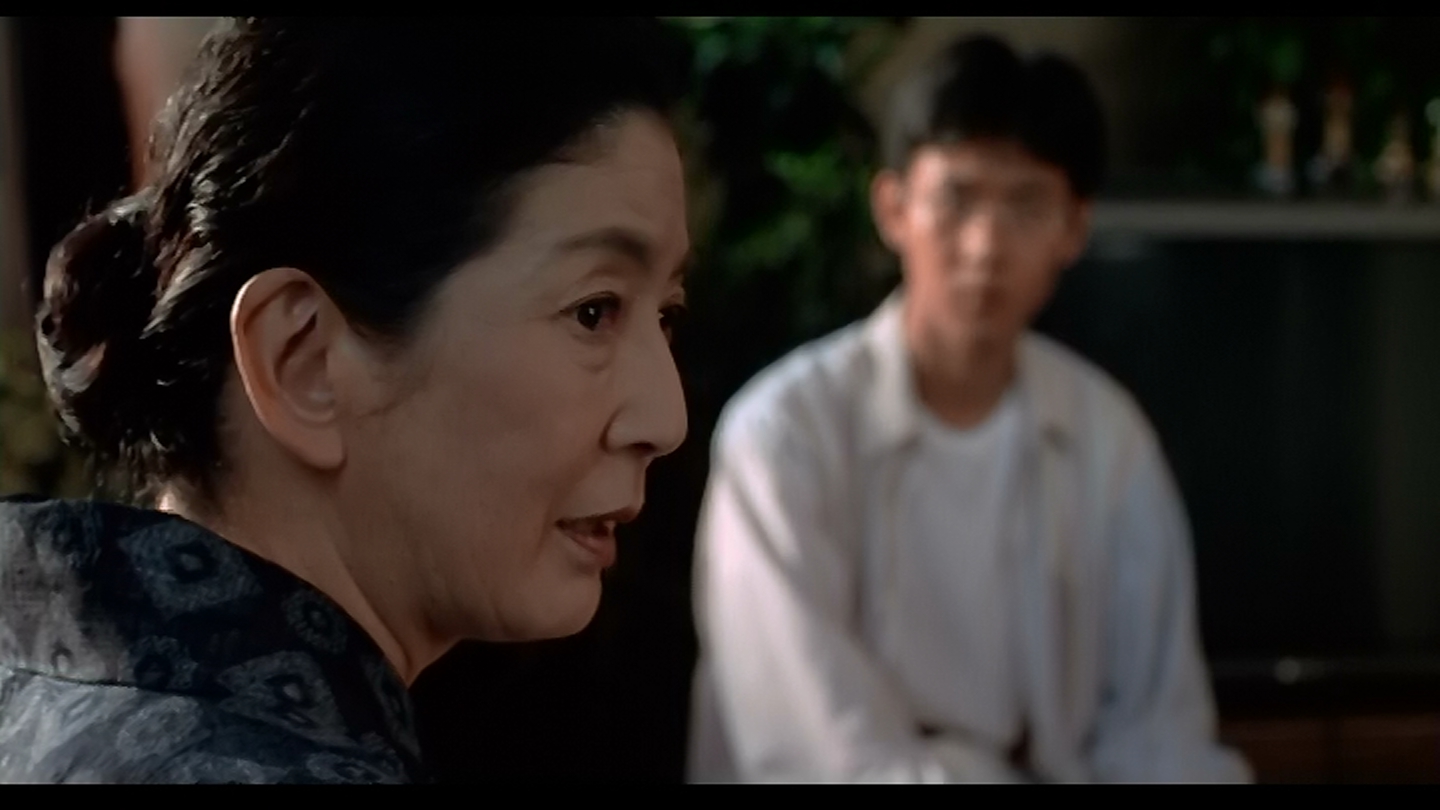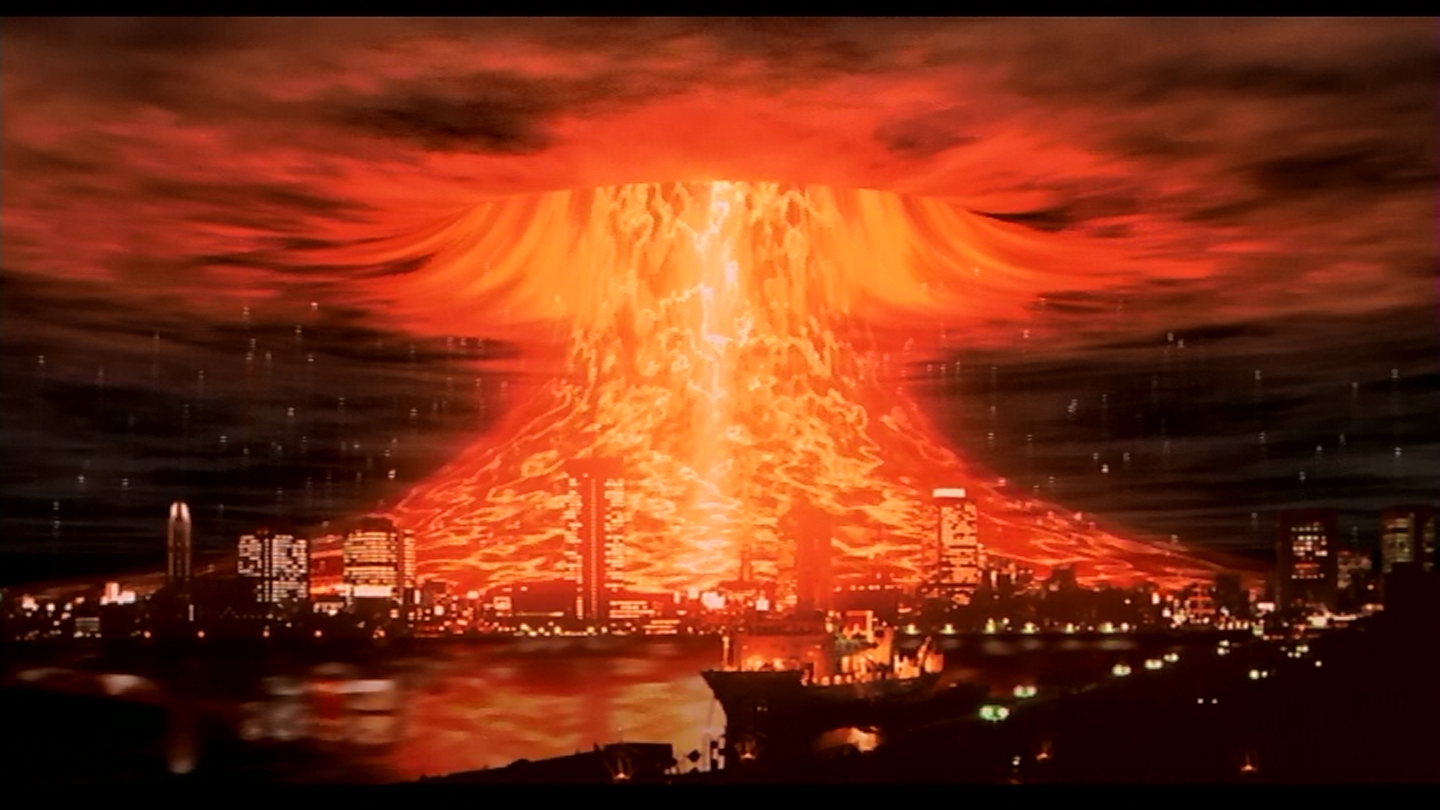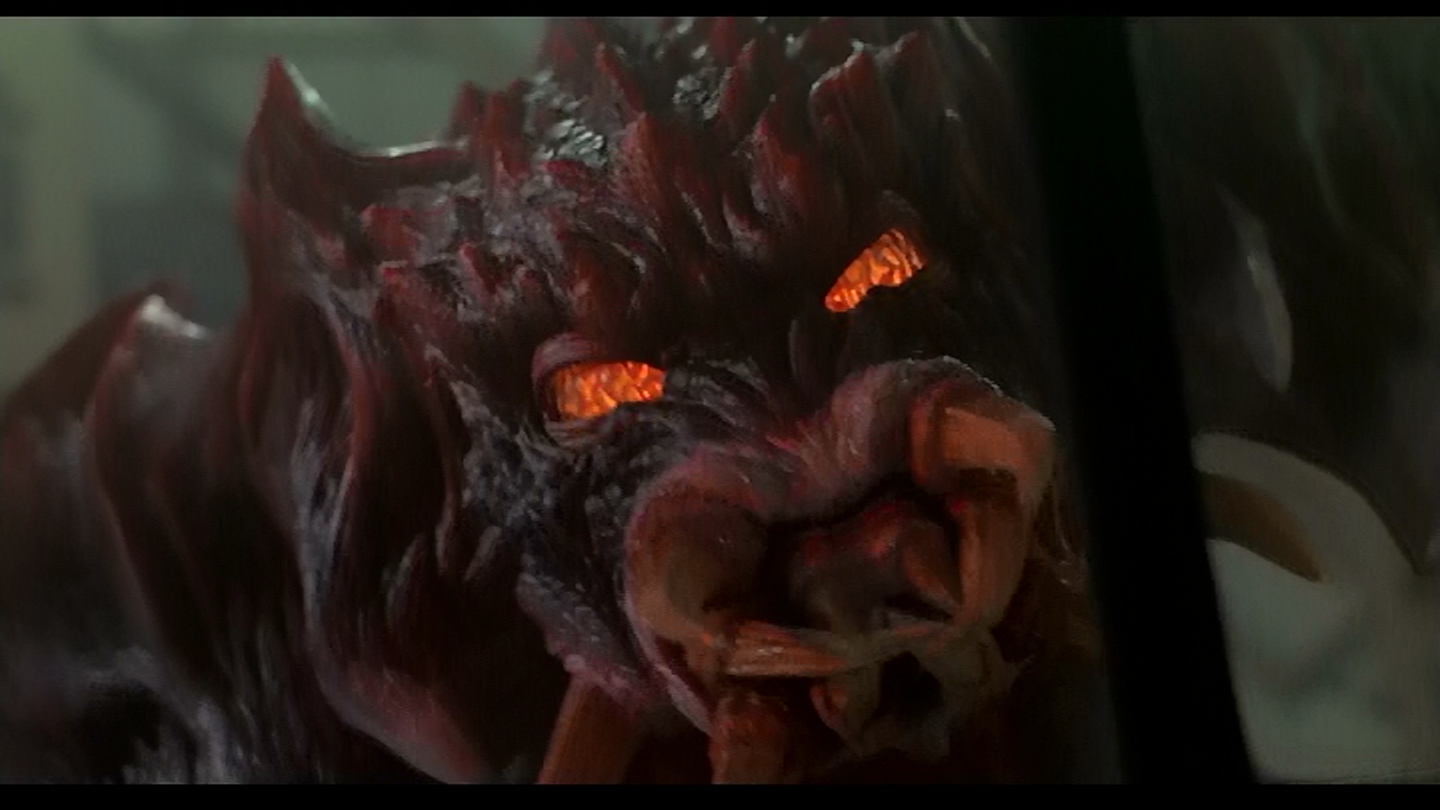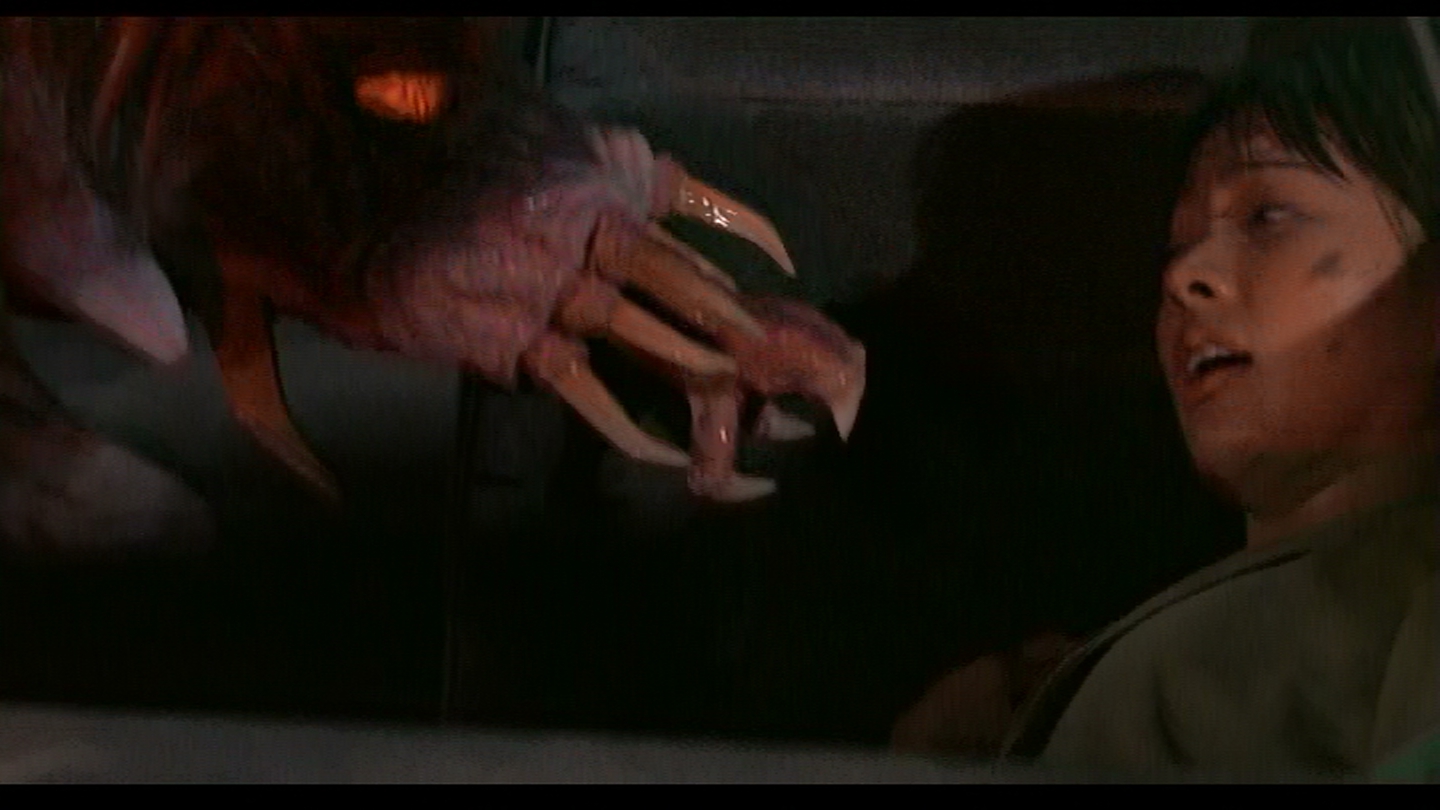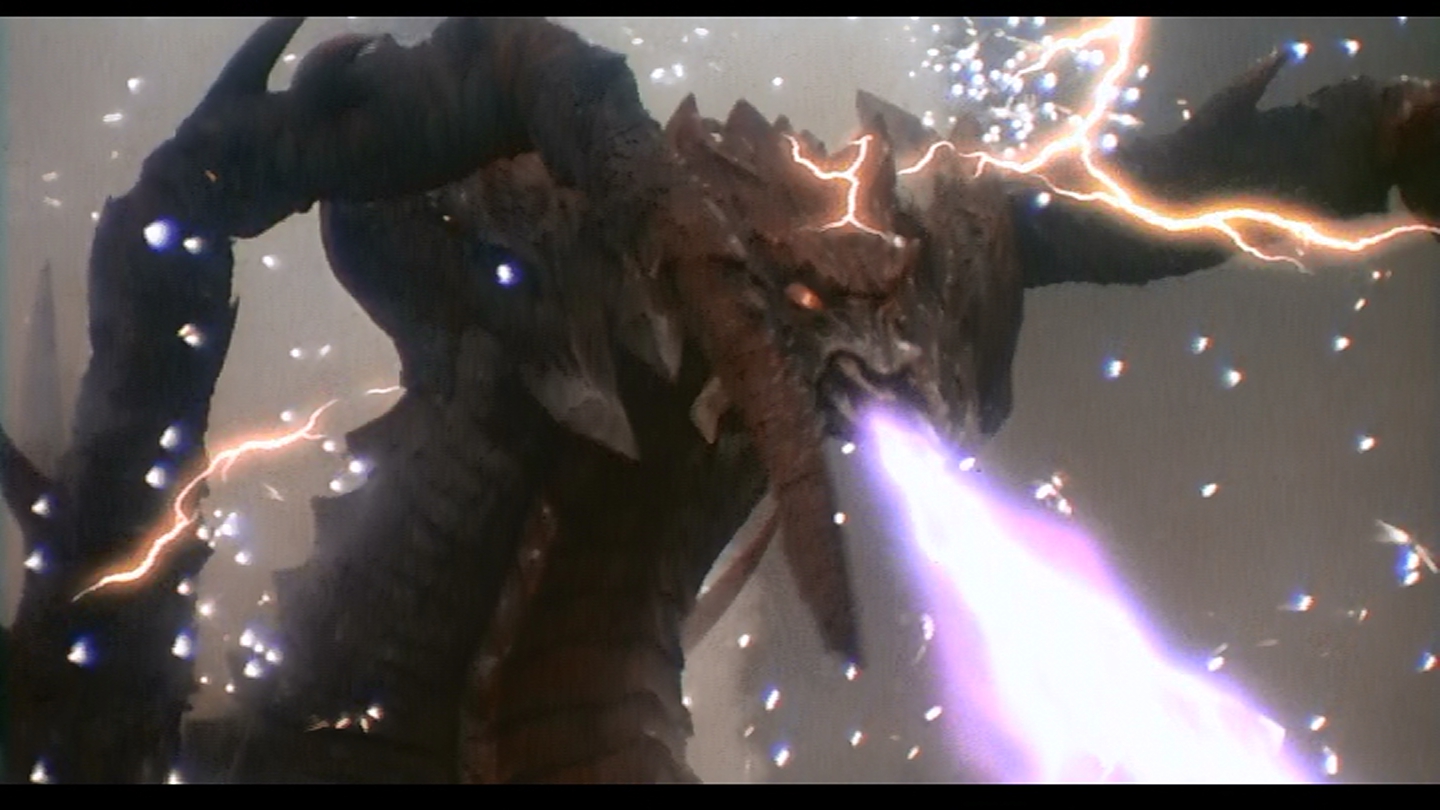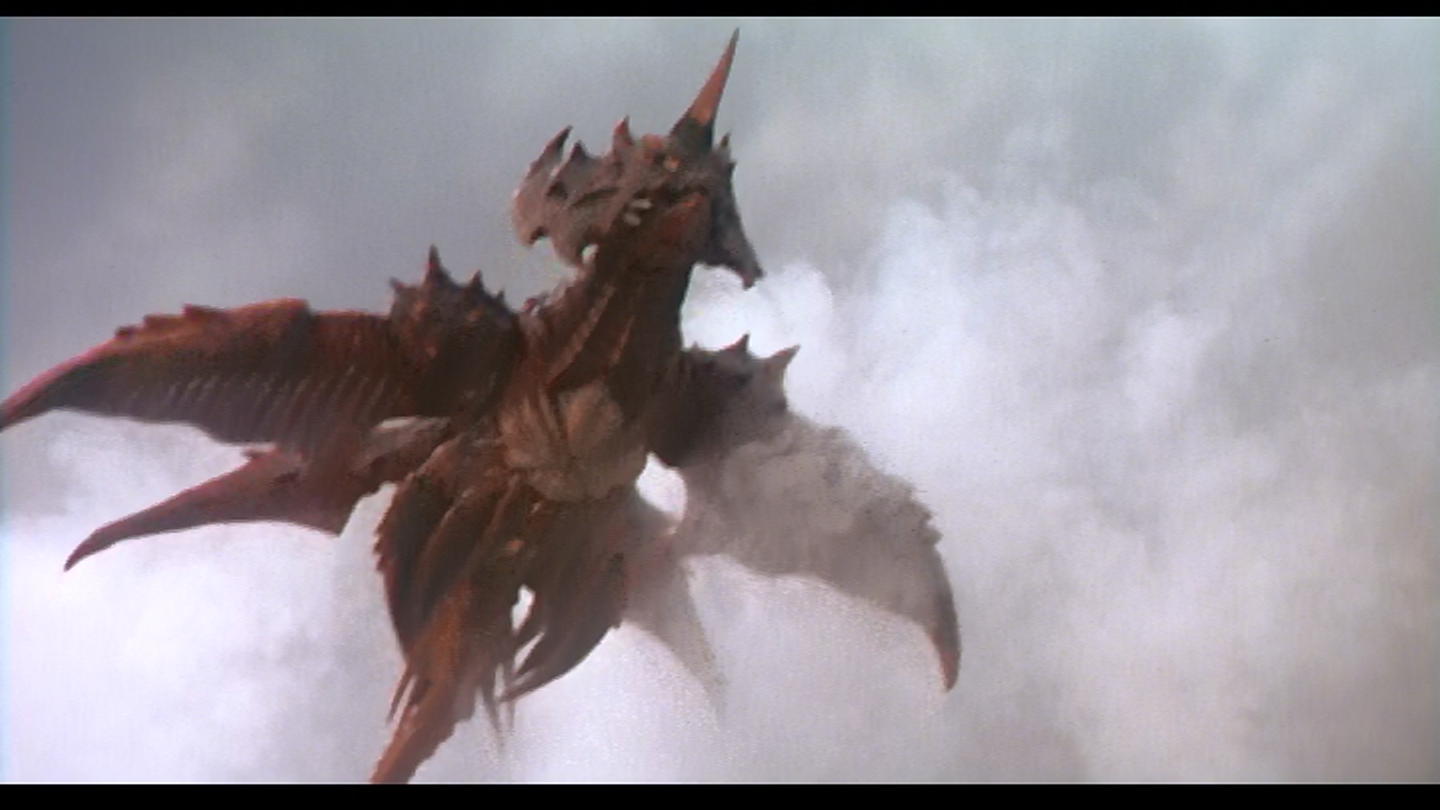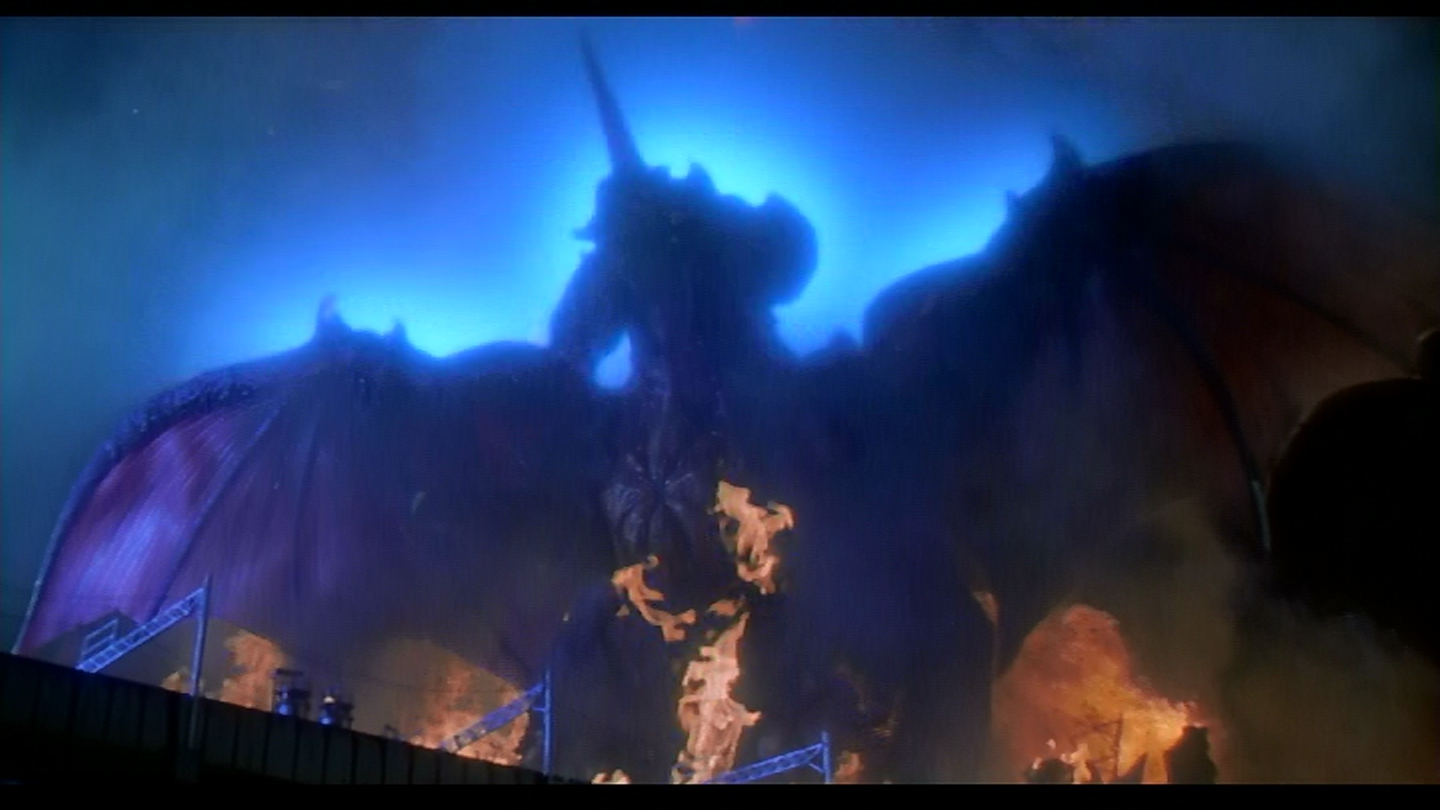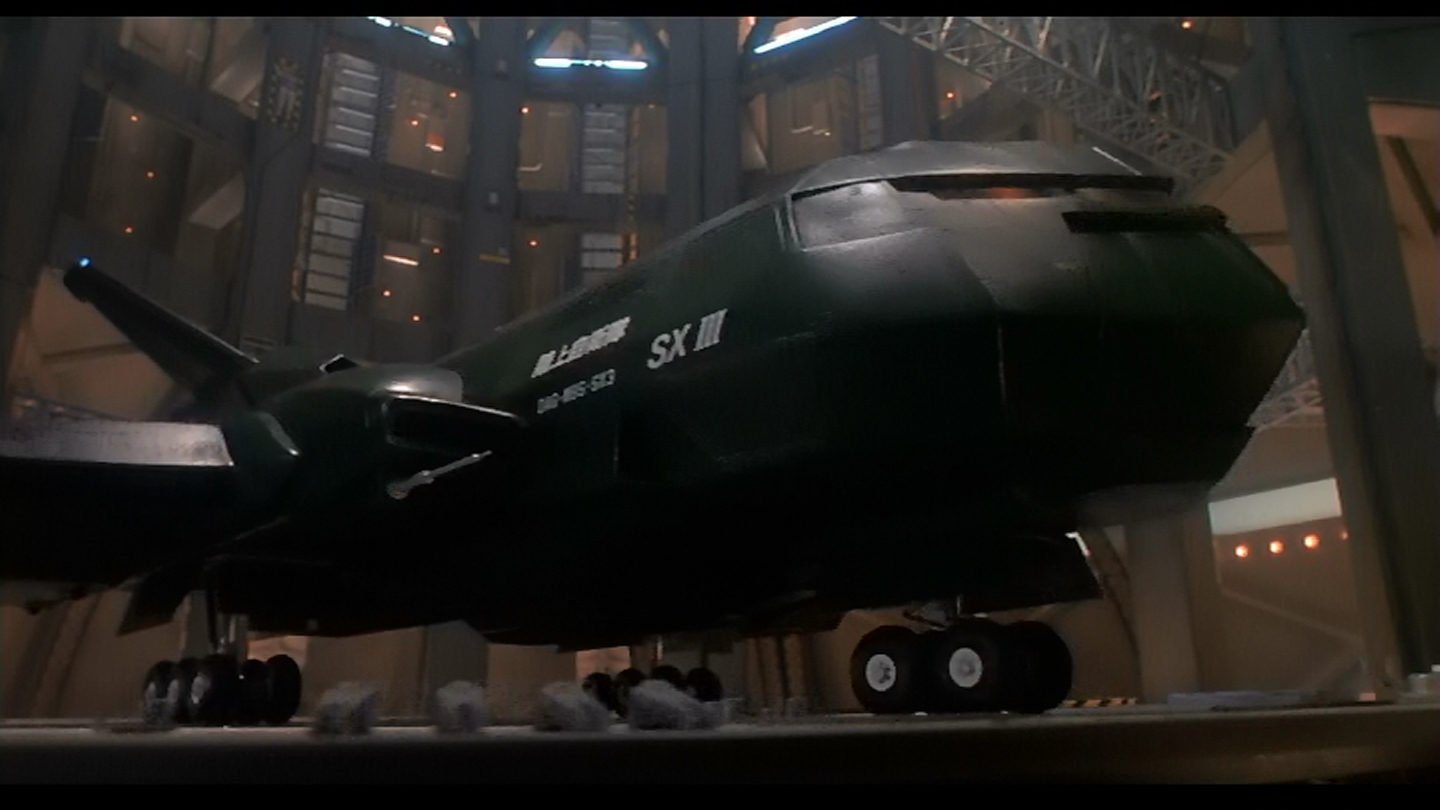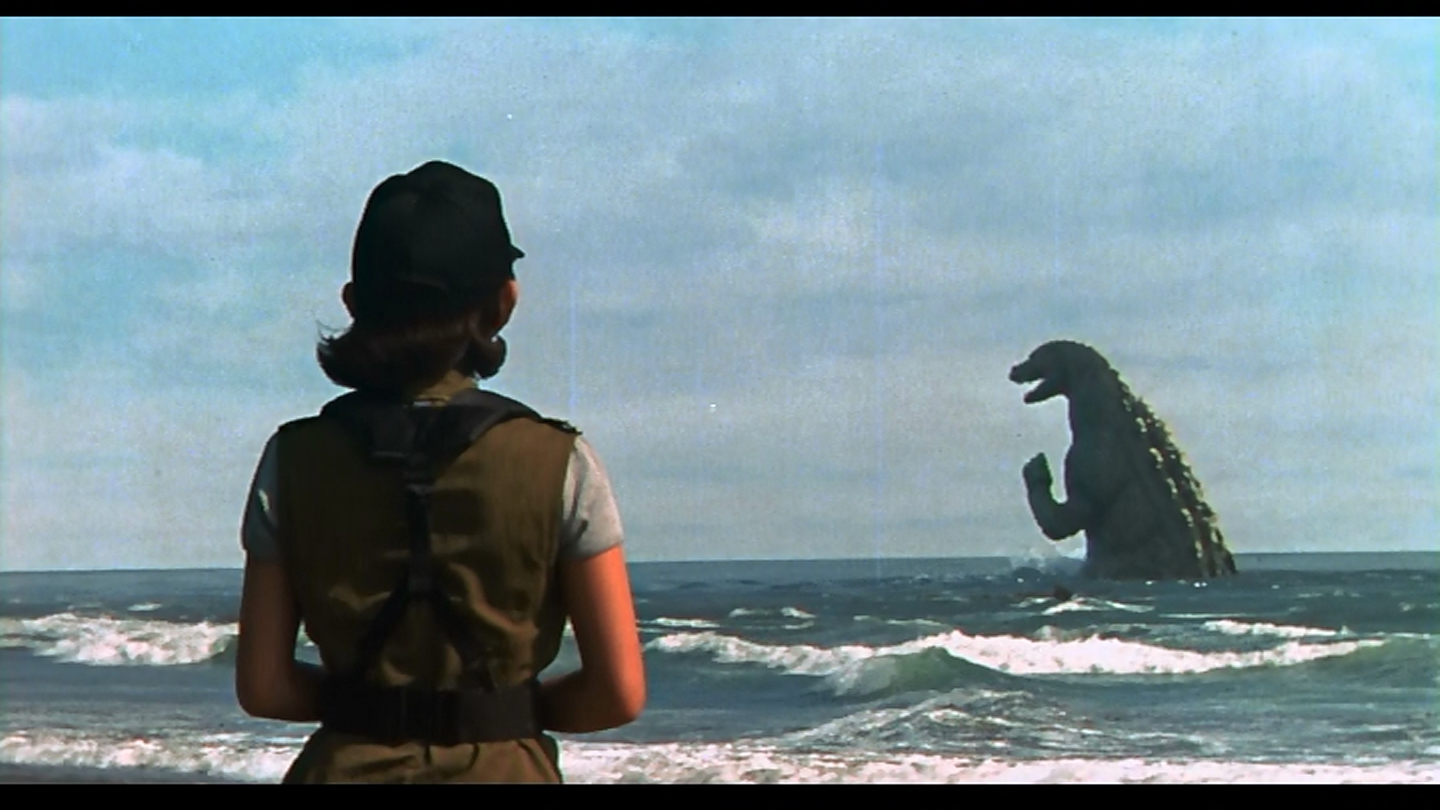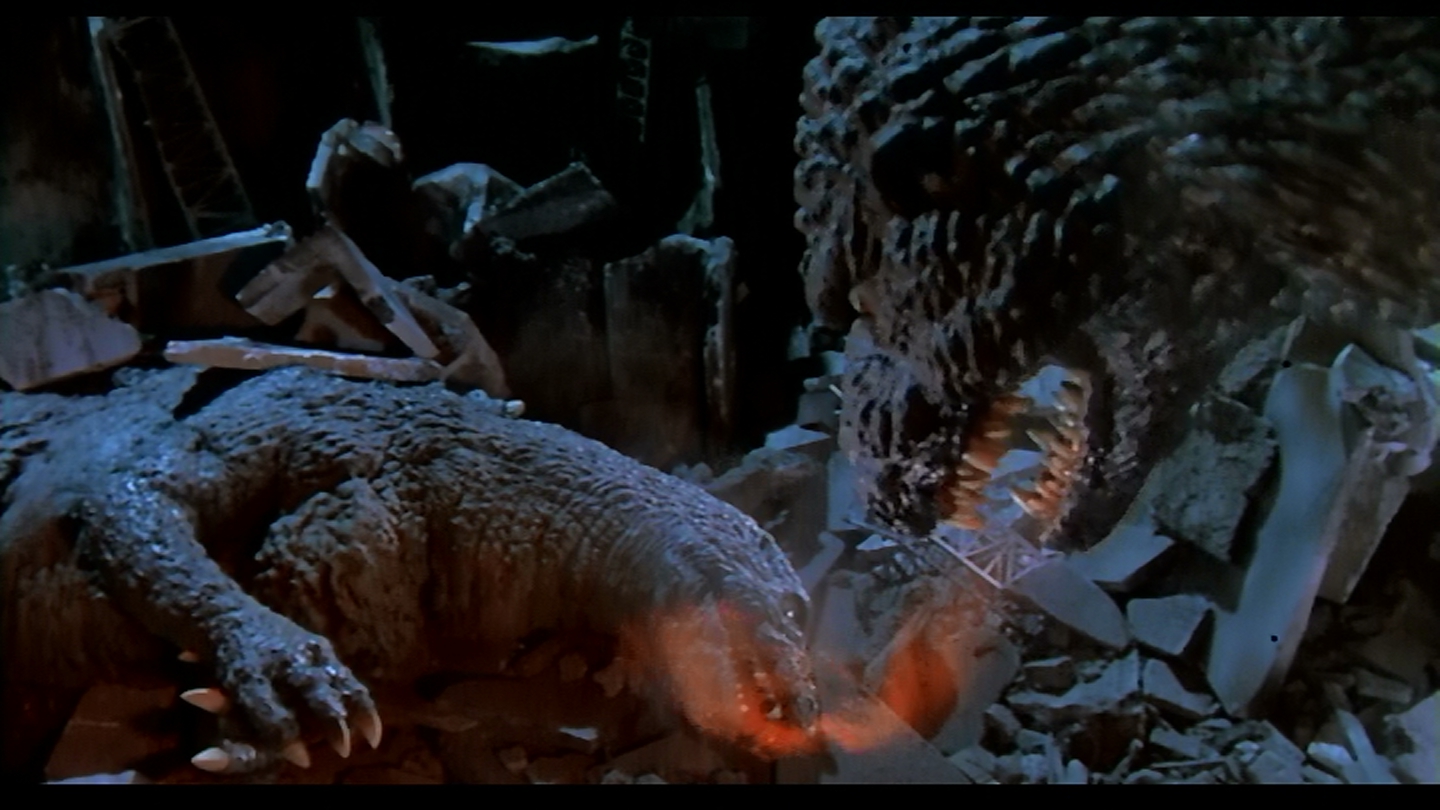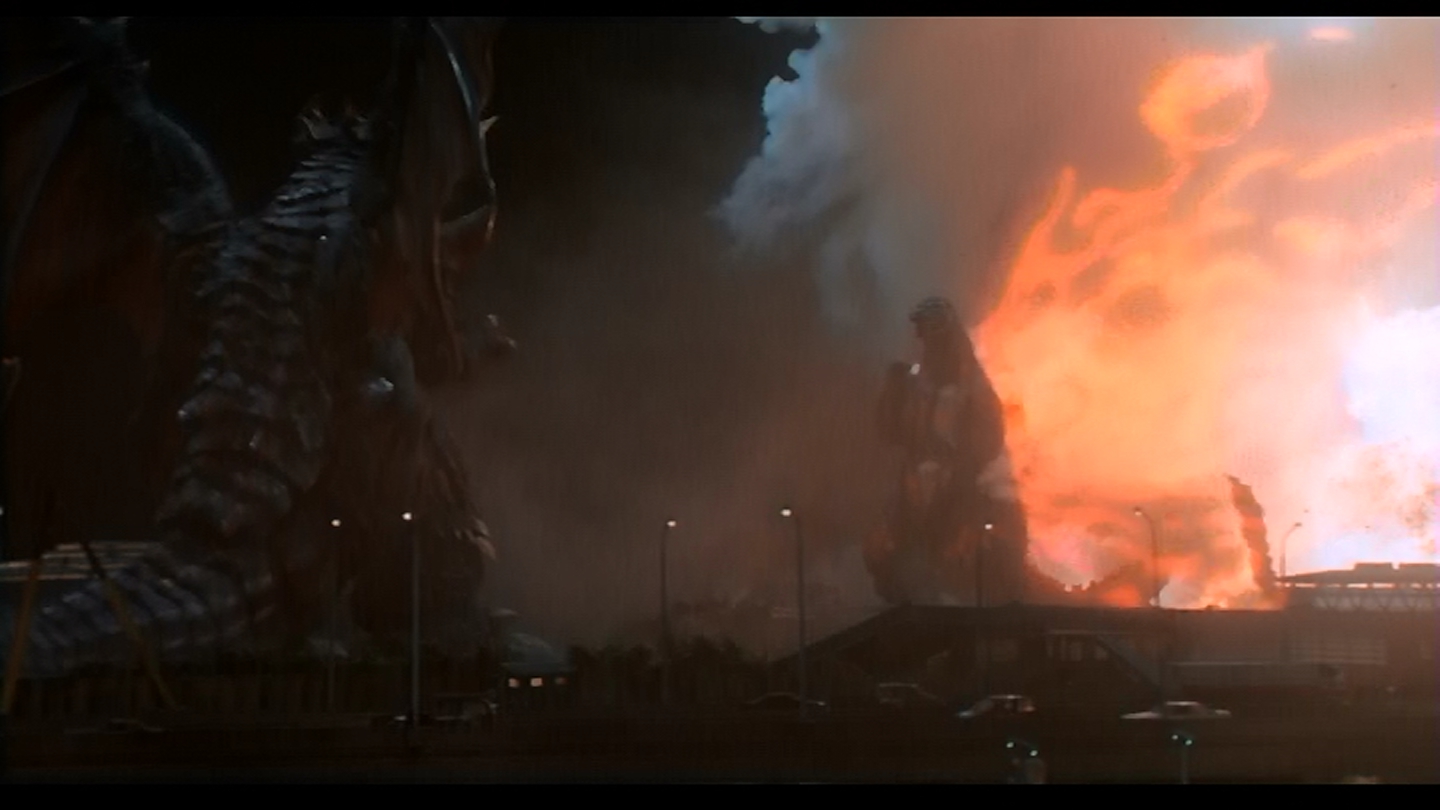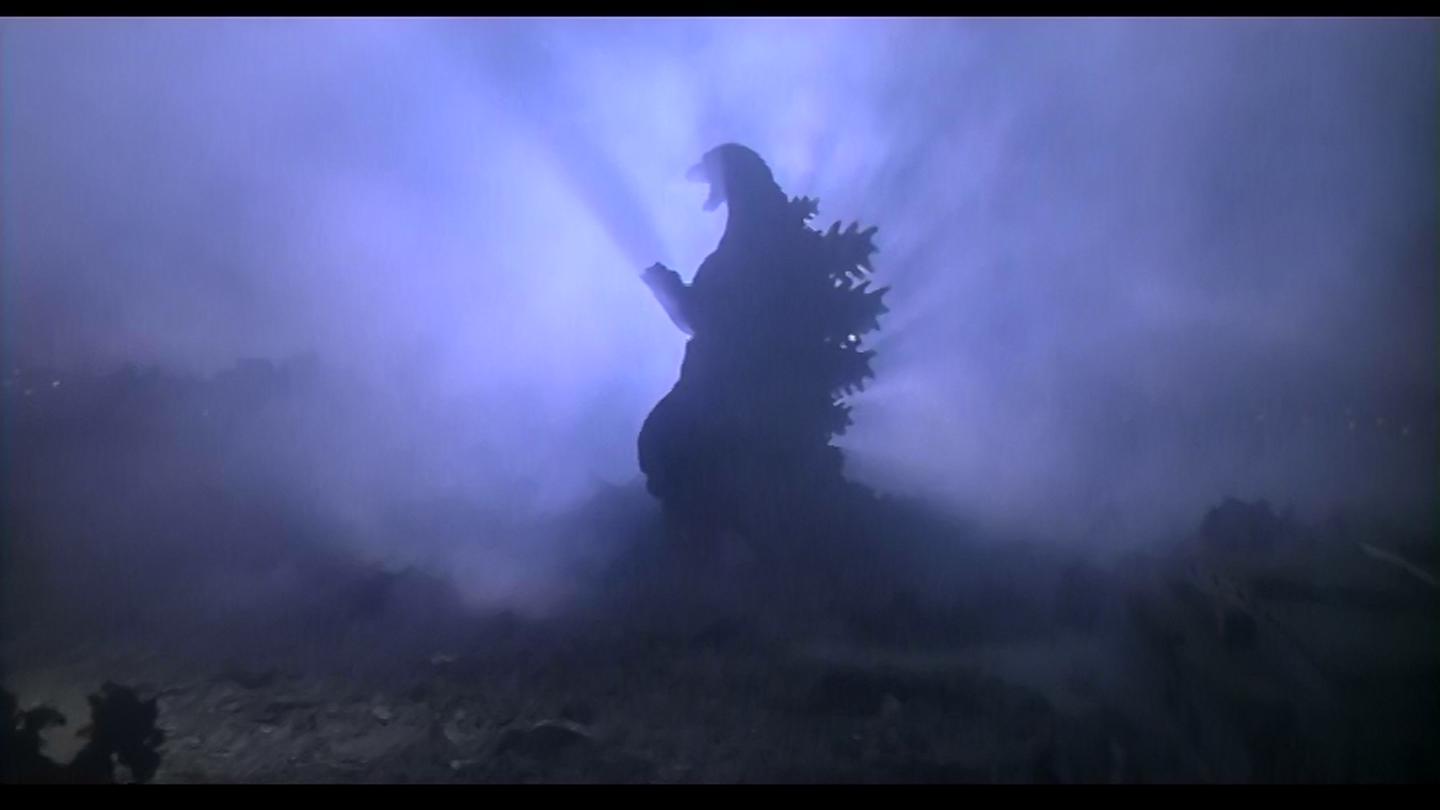Mothra has always been the least comprehensible, to Westerners, of Toho's kaiju. It's a gigantic moth. How can that possibly be threatening? Mothra points out the difference between the Japanes perception of kaiju film, more as metaphor than realistic drama. The original Mothra film was a color spectacle that set itself apart from the darker and more brooding kaiju films of the period. And that legacy is evoked in the colorful title sequence of the film.
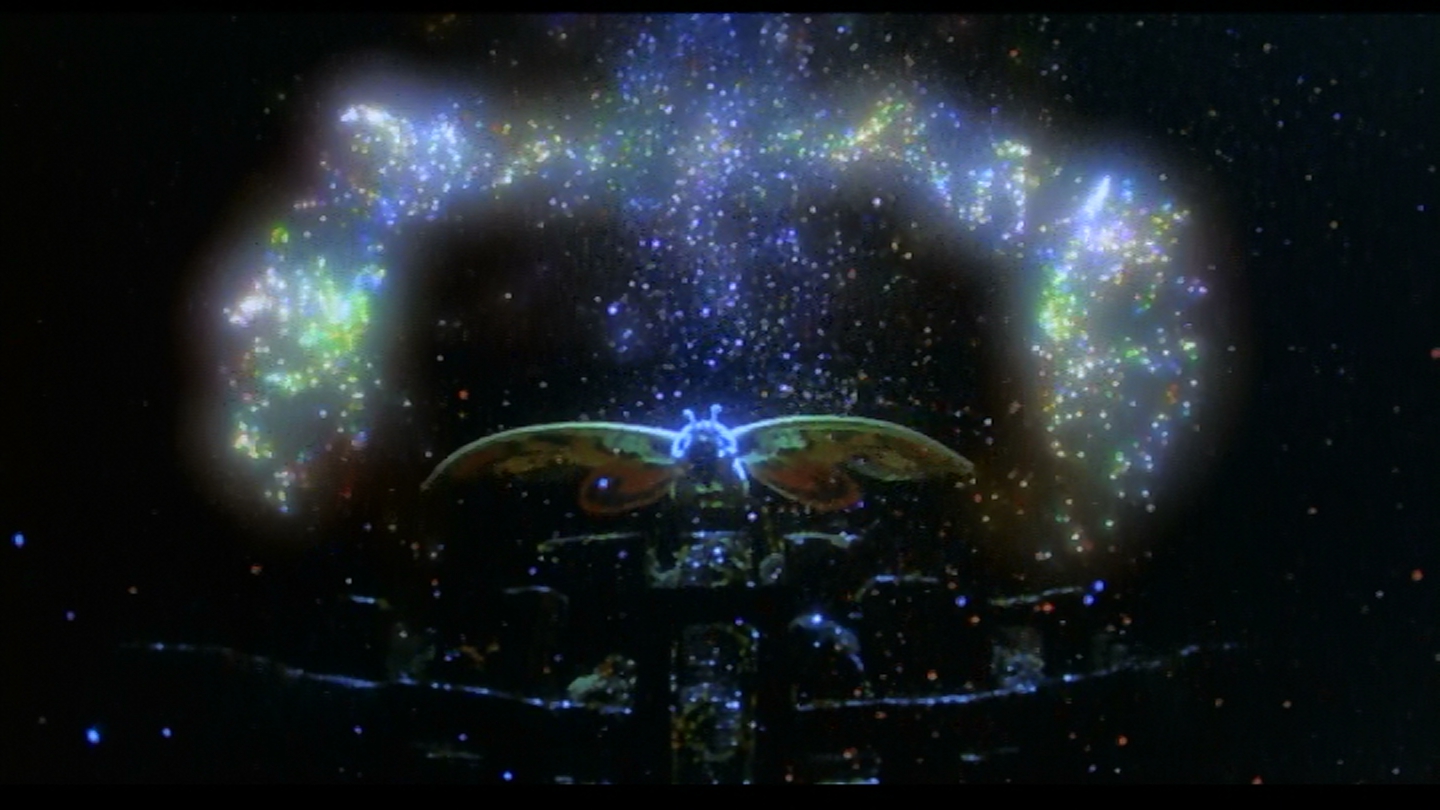
The film begins when a logging company. Mothra was one of the first films to add social commentary about the destruction wrought by greedy industrialists, both in the original Mothra and in the follow up Mothra vs Godzilla. But rather than working social commentary, the loggers uncover the magical seal that has kept the evil kaiju imprisoned for millions of of years. So the company is not portrayed so much as evil as unthinkingly destructive.
The Rebirth of Mothra is clearly aimed at a younger audience. The protagonists are children, Wakaba and Taiki, about the same age as the classic Gamera film protagonists. This does not endear the film to me, since the first thing we see the two kids to is fight over a book. Their father, of course, works too much, and dear mother is put upon.
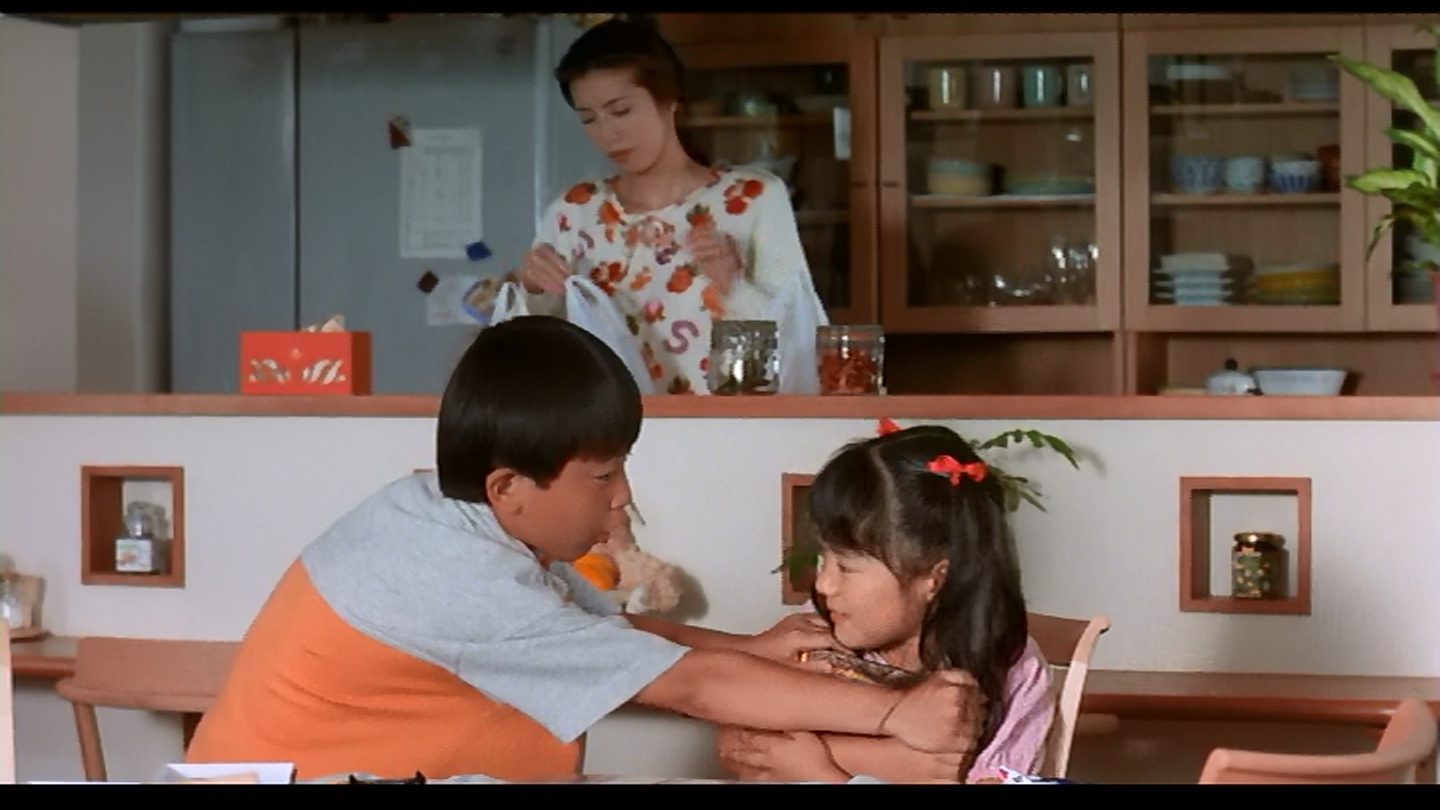
For the first time, the Shobijin, the Mothra-related fairies, gave names. Moll and Lora. Where previously, they have been shown in matching outfits, now they are dressed in orange and blue, in the first orange and blue contrast I can remember in a kaiju film. At least it's way ahead of the curve, because the contrast comes flooding into films after the turn of the milennium.
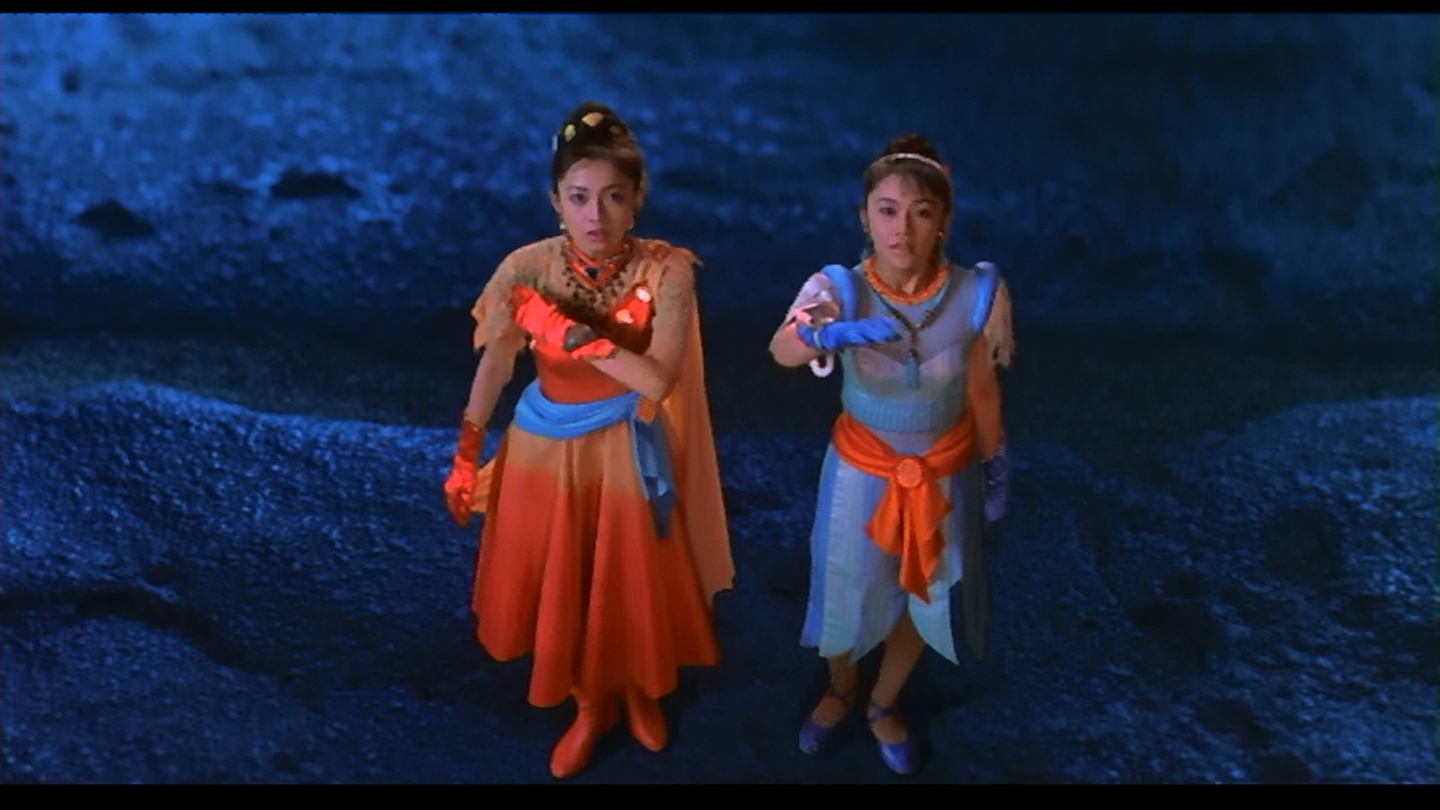
Initially, everything is small, Shobijin-sized. There's a tiny Fairy Mothra, and formerly-imprisoned evil sister Balvera has Garugaru, a sort of dragon-like mount, and it's all very tiresome. But once Mothra Momma shows up, the pace and my interest pick up.
This can't be in continuity with the Godzilla series, since the Mothra from Godzilla vs Mothra: battle For the Earth departed for outer space. But continuity has never been Toho's strong suit.
Mothra is a lot smaller in comparison to its foe that it has been. In Mothra vs Godzilla, Mothra's wingspan is wider than Godzilla's reach. Here, Mothra is much smaller than Death Ghidorah. And I sort of miss the CHristian undertones of Mothra. Even the theme of self-sacrifice has gone.
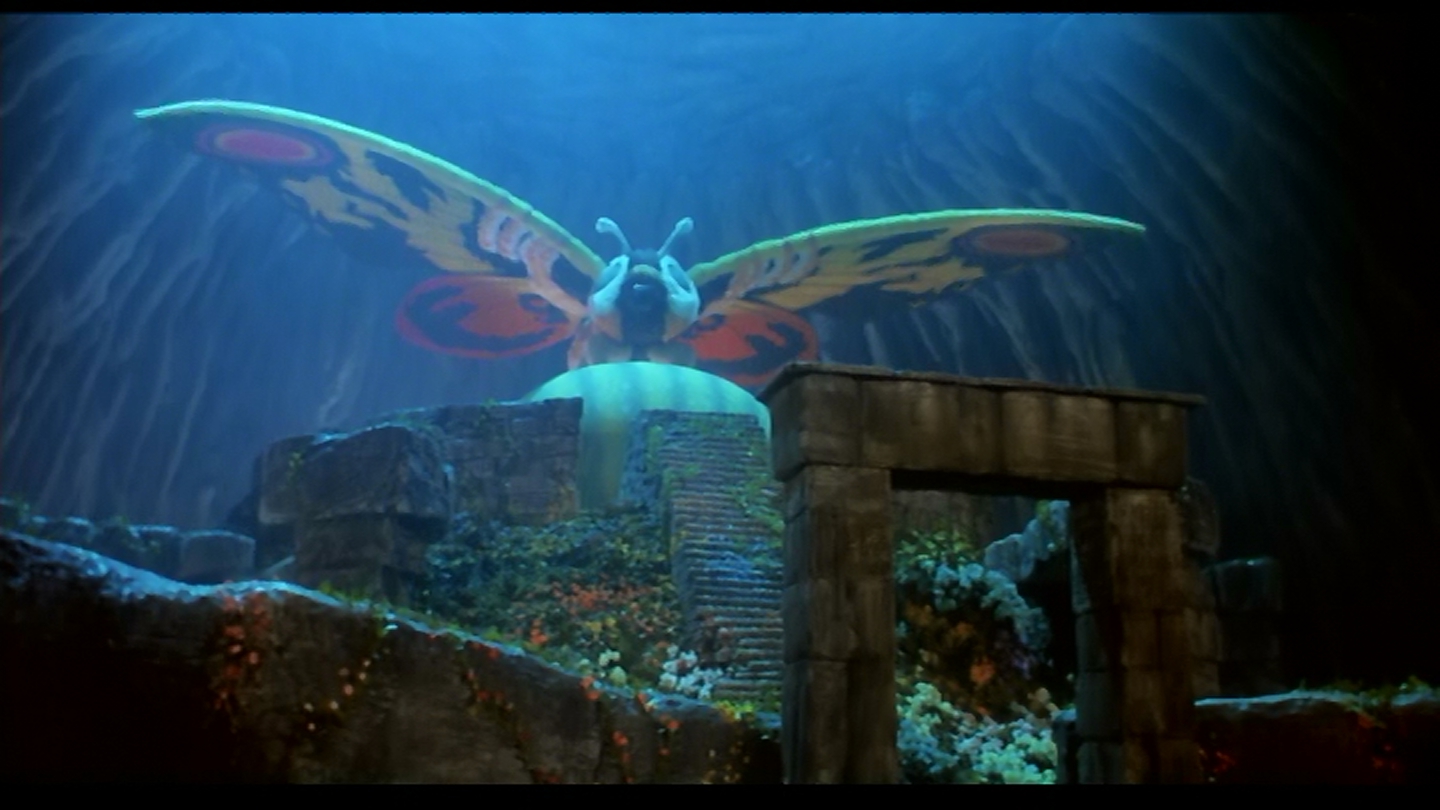
Death Ghidorah is kind of cool, although the traditional cry has been changed. It's a quadruped, and can't fly, yet. The golden scales have been replaced with a more reptillian look, andgular and looking like rock crystals. And just to prove how tough it is, we are told it's what killed the dinosaurs. In an odd reversal of Toho's usual presentation, Ghidorah berathes flames, more like Gamera or Yonggarythan anything Toho has previously made. Once Ghidorah gets functional wings, however, the breath weapon returns to special effects.
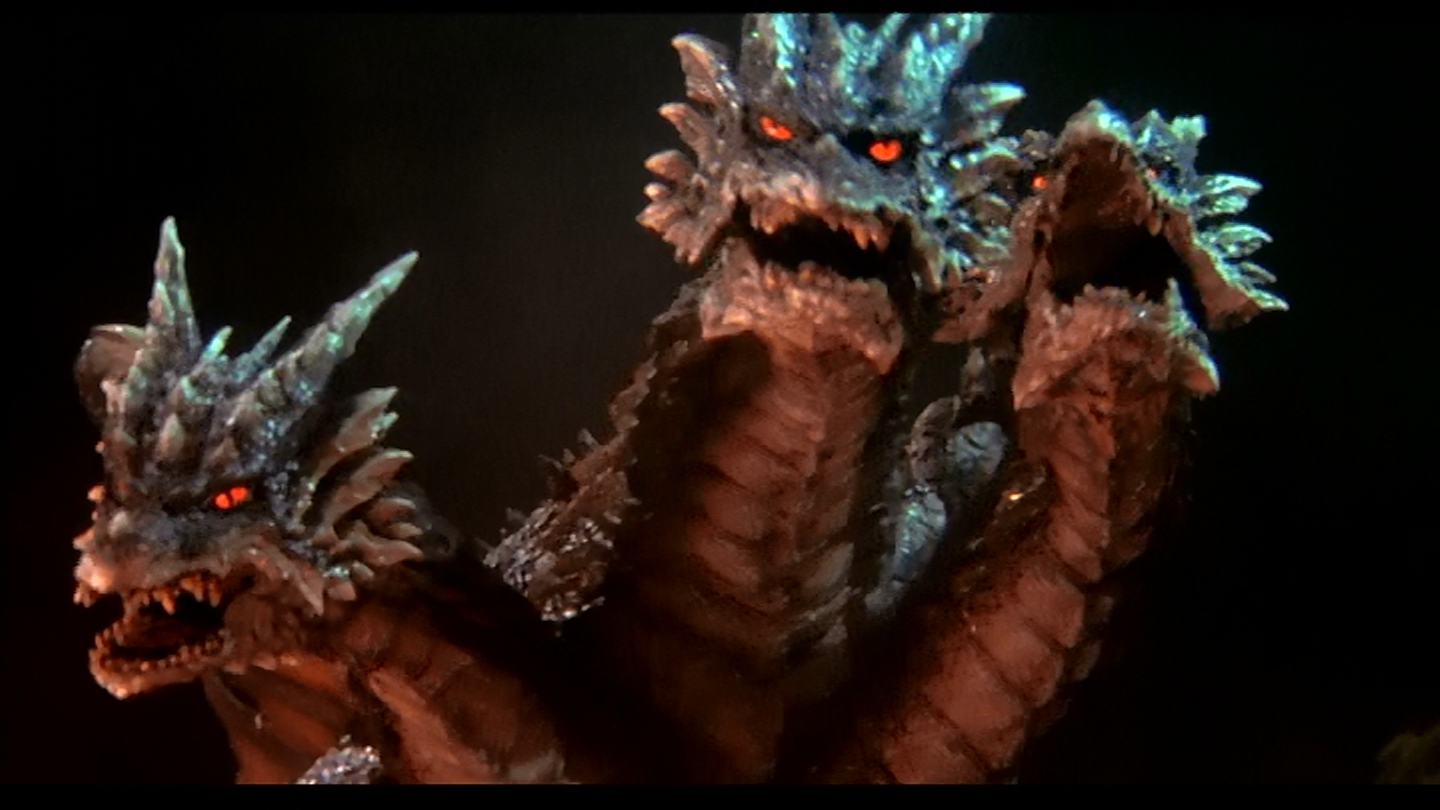
The environmental angle does not clout us over the head quite as much as it does in Godzilla vs Mothra: Battle For the Earth. Or at least as often. Death Ghidorah is going to suck all the energy from the Earth, and it created a low-oxygen cloud that hurts the elderly.
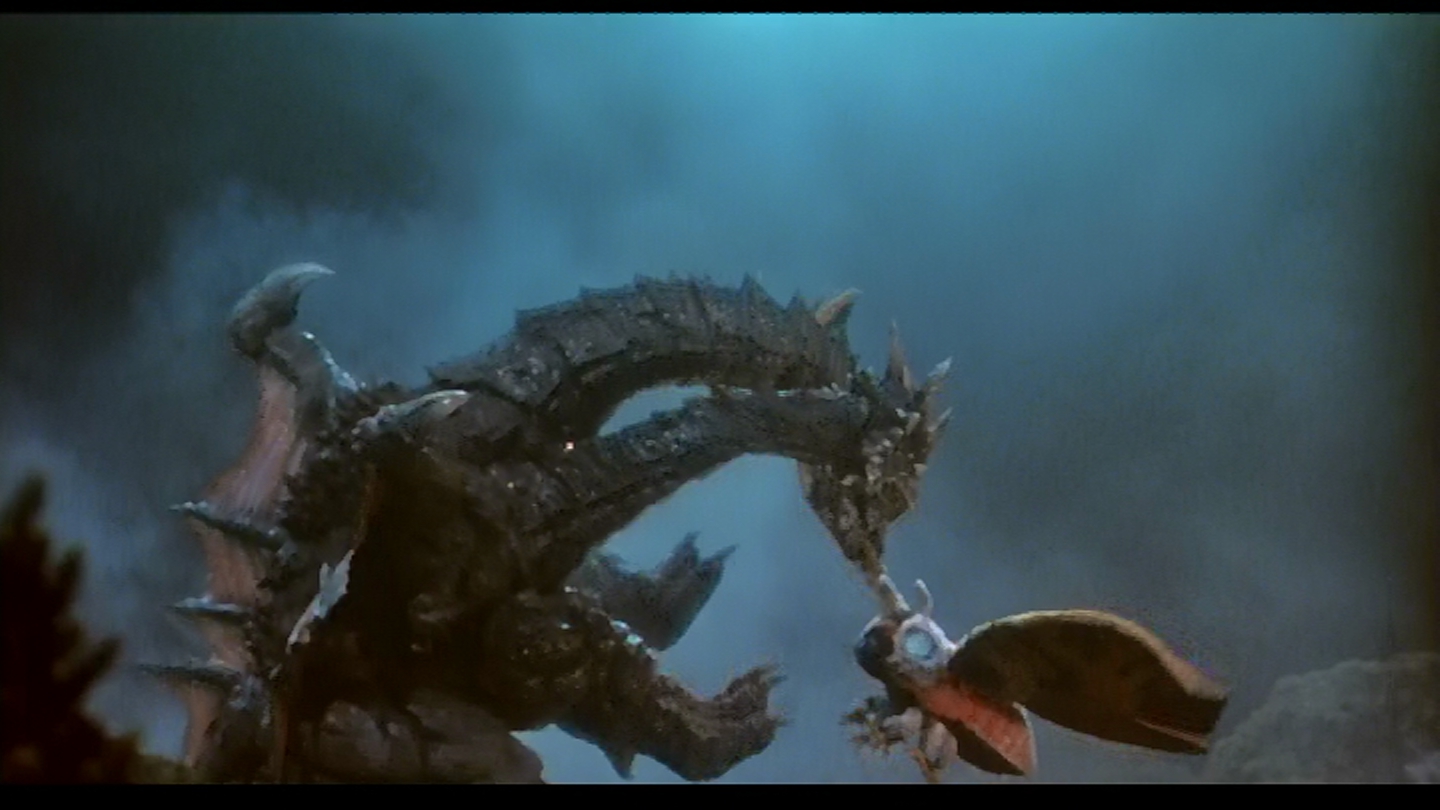
And it's clear that Toho has been taking notes from the revitalized Gamera series. The kids get the talisman. When Taiki tried to use the amulet to heal the injured Mothra, he fails. When both Wakaba and Taiki try together, it works.
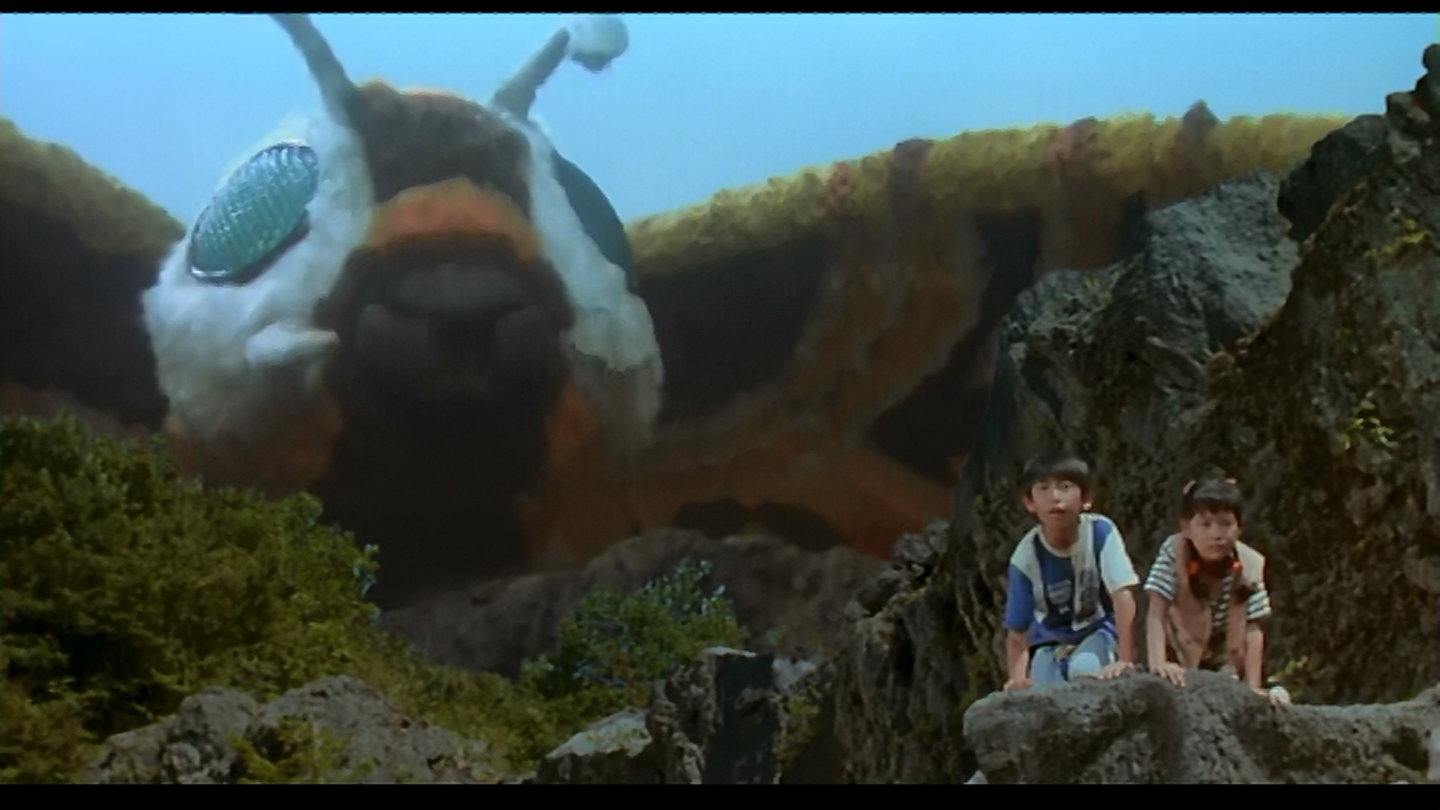
Larval Mothra, once again, does better against Ghidorah than imago Mothra. But not the silk itsn't just silk, it's got some sort of disruptive energy in it. Ghidorah is confused and enraged. Of course, all previous times that Mothra has tackled Ghidorah, Godzilla has led the attack. But Mothra has more powers than it had back then. It has the antenna rays, some sort of lightning attack from its wings, and even the larva has some sort of chest-burst attack as well as Predator-style comoflage. But even the combined might of the two can't take down Death Ghidorah. The fight is very good, the best of the film.
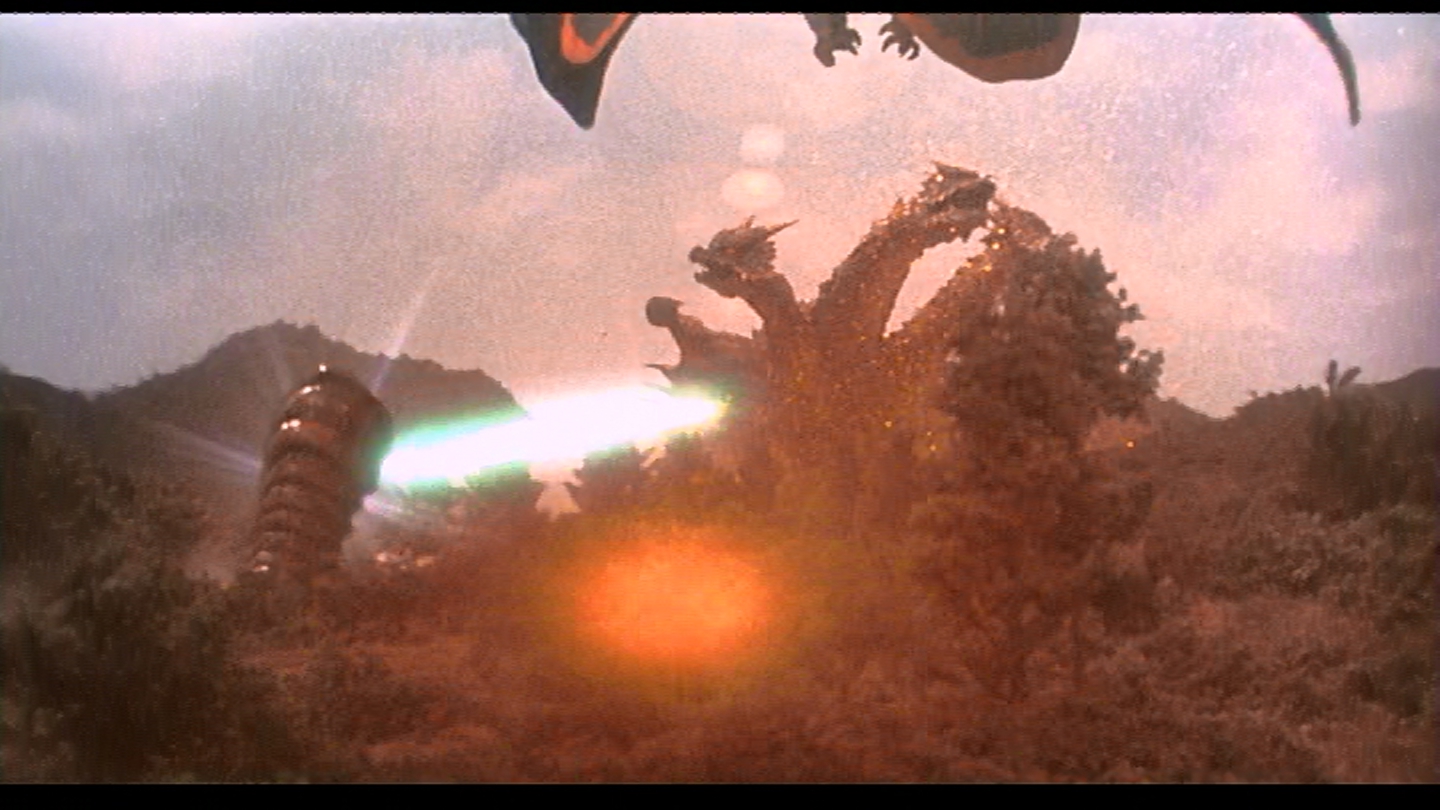
This is, incidentally, the first film in which the Mothra imago and larva get to work together. It's interesting and well-handled. Ironically, it is helping the larva that kills Mothra. Not by defending it against Death Ghidorah, but because it lets the larva down on the ocean, and then lands herself, becoming waterlogged. She struggles to remain on the surface, but cannot, eventually sinking.
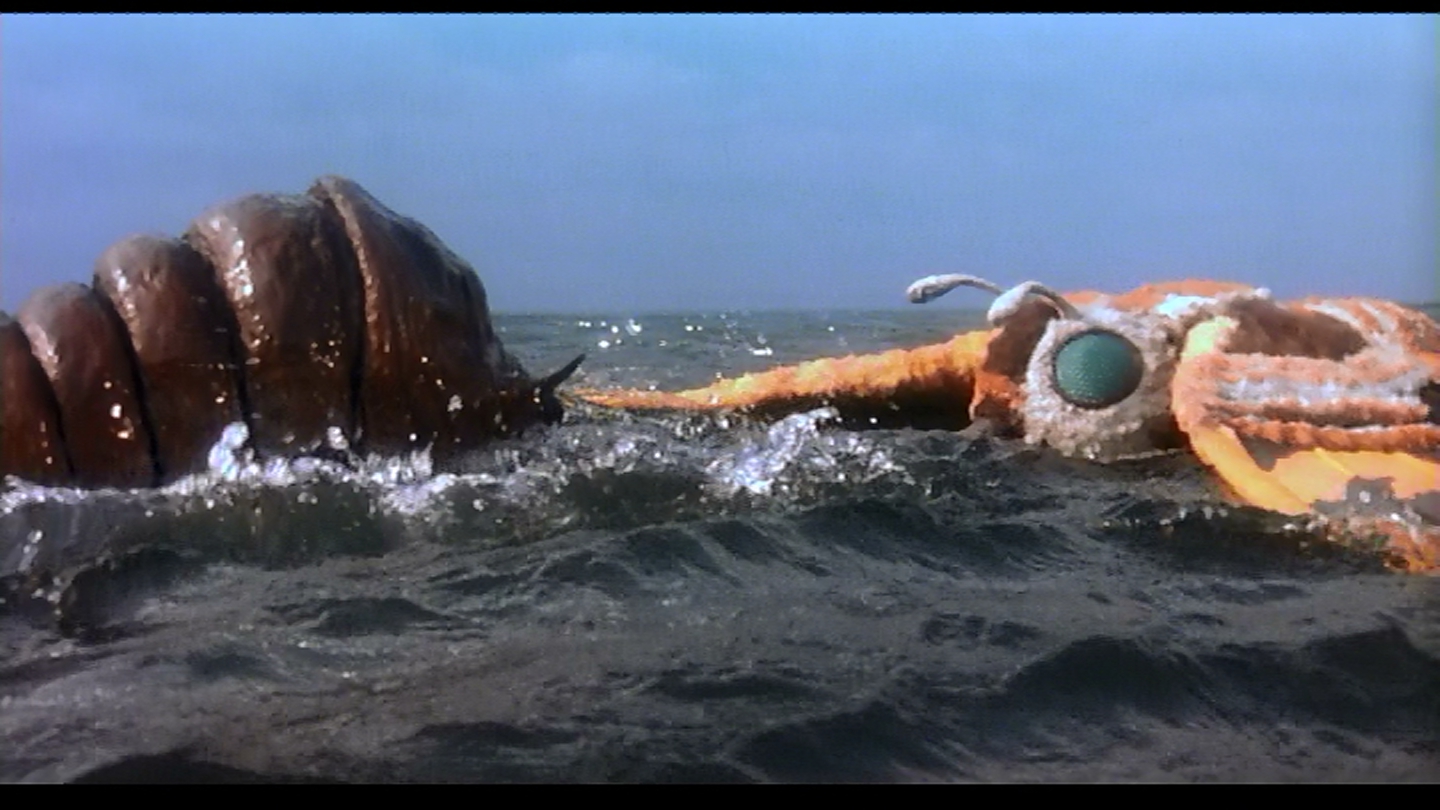
Which is unexpectedly heavy for a kids' film. Because it's quite emotionally resonant without being sappy. Directly after this, we go to a hospital, something we really haven't done since the first Godzilla. It's not nearly as resonant or desolate, but it does reming us that people have gotten hurt.
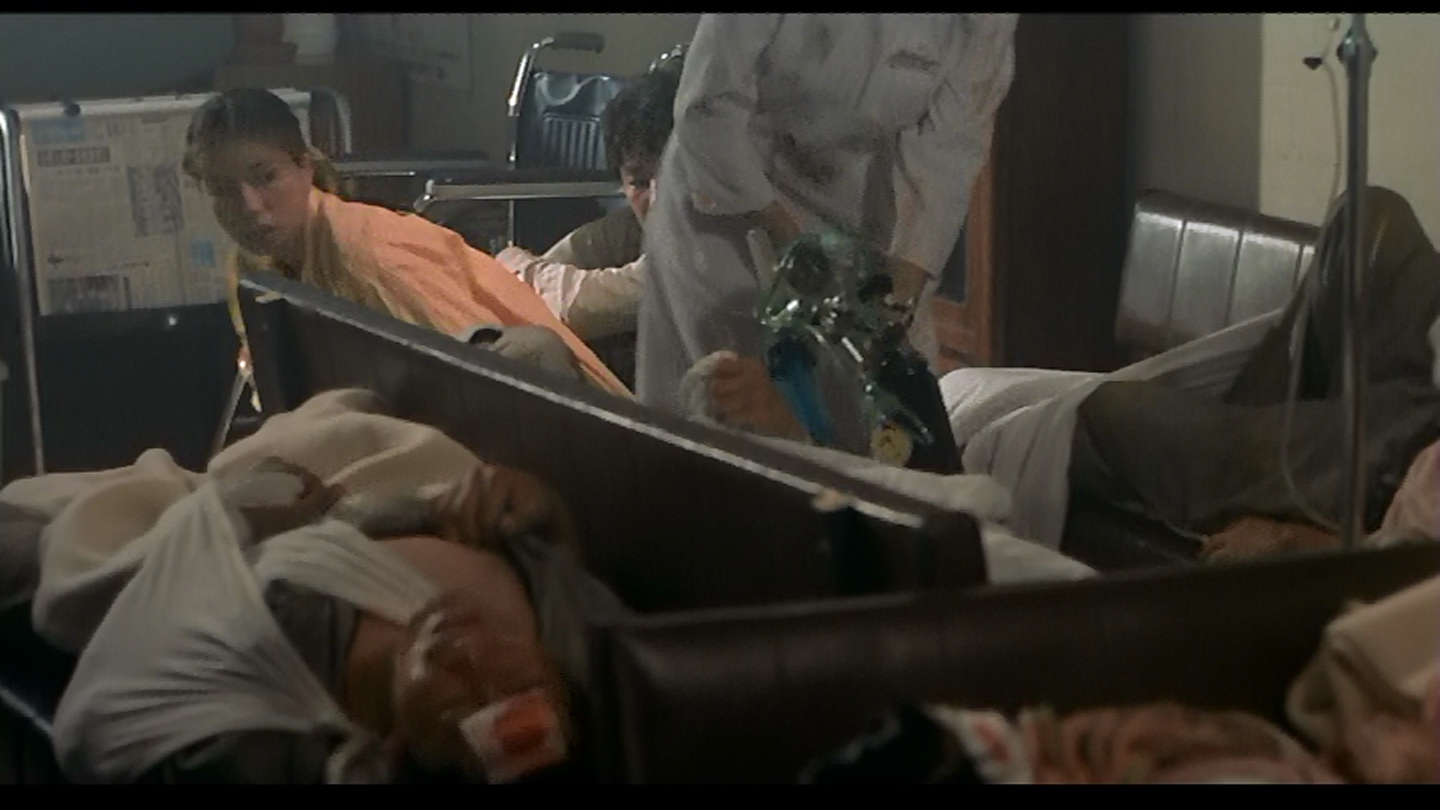
Larval Mothra isn't the only monster to get an upgrade. Three quarters of the way through the film, Ghidorah has consumed enough energy to develop its wings, and fly.
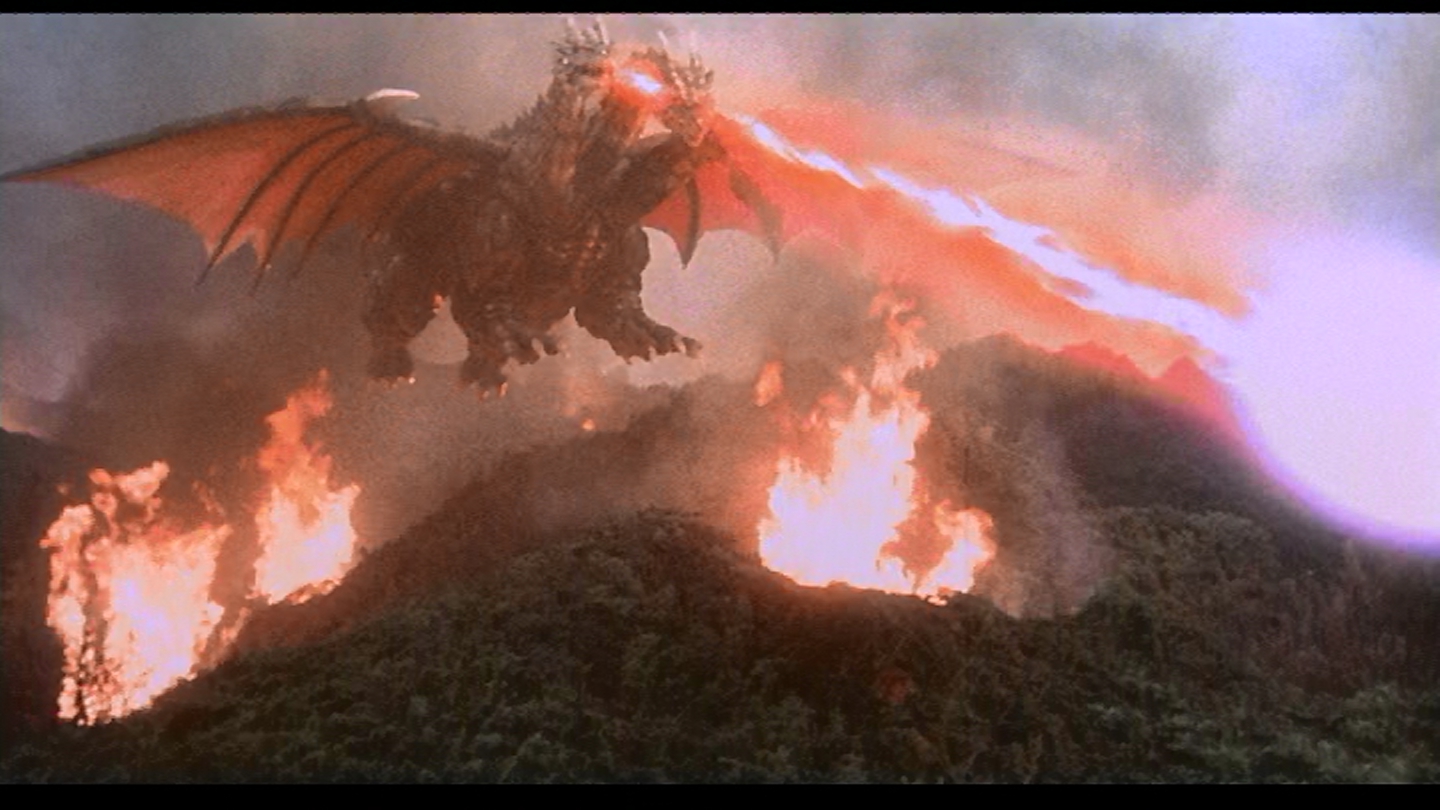
But the Mothra larva gets an upgrade, too, building a crystalis on a ten thousand year old tree, and being reborn. The new Mothra is more angular than previous Mothras, with feathery antennae, green eyes, and a black pattern on its head. It looks more combative.
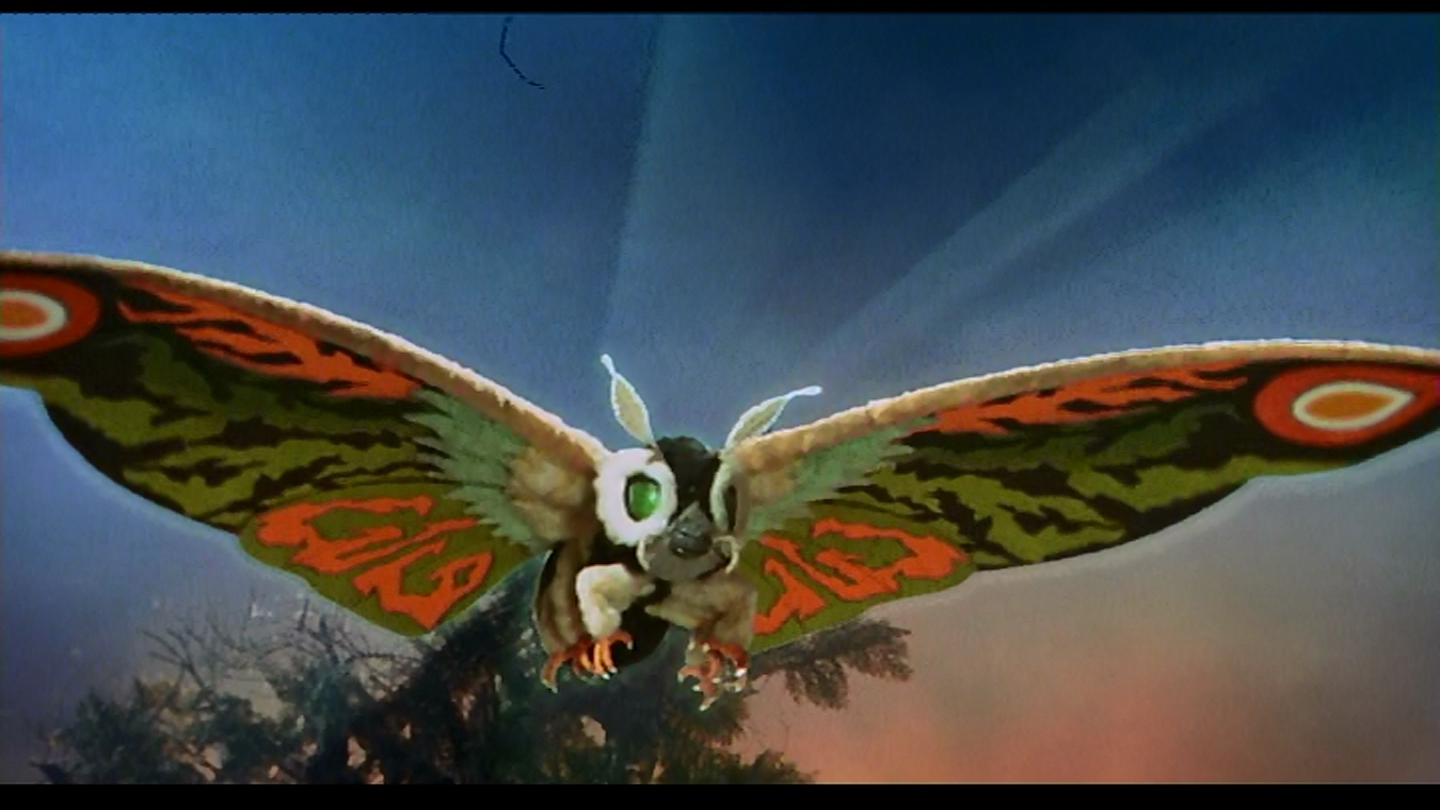
And it is. It takes on Death Ghidorah head-on, and unleashes its most potent new power, being able to divide itself into thousand of tiny moths that form a cloud and blow Ghidorah up. OK, I have no idea what's up with that. But eventually, Death Ghidorah is imprisoned under the Sigil of Mothra.
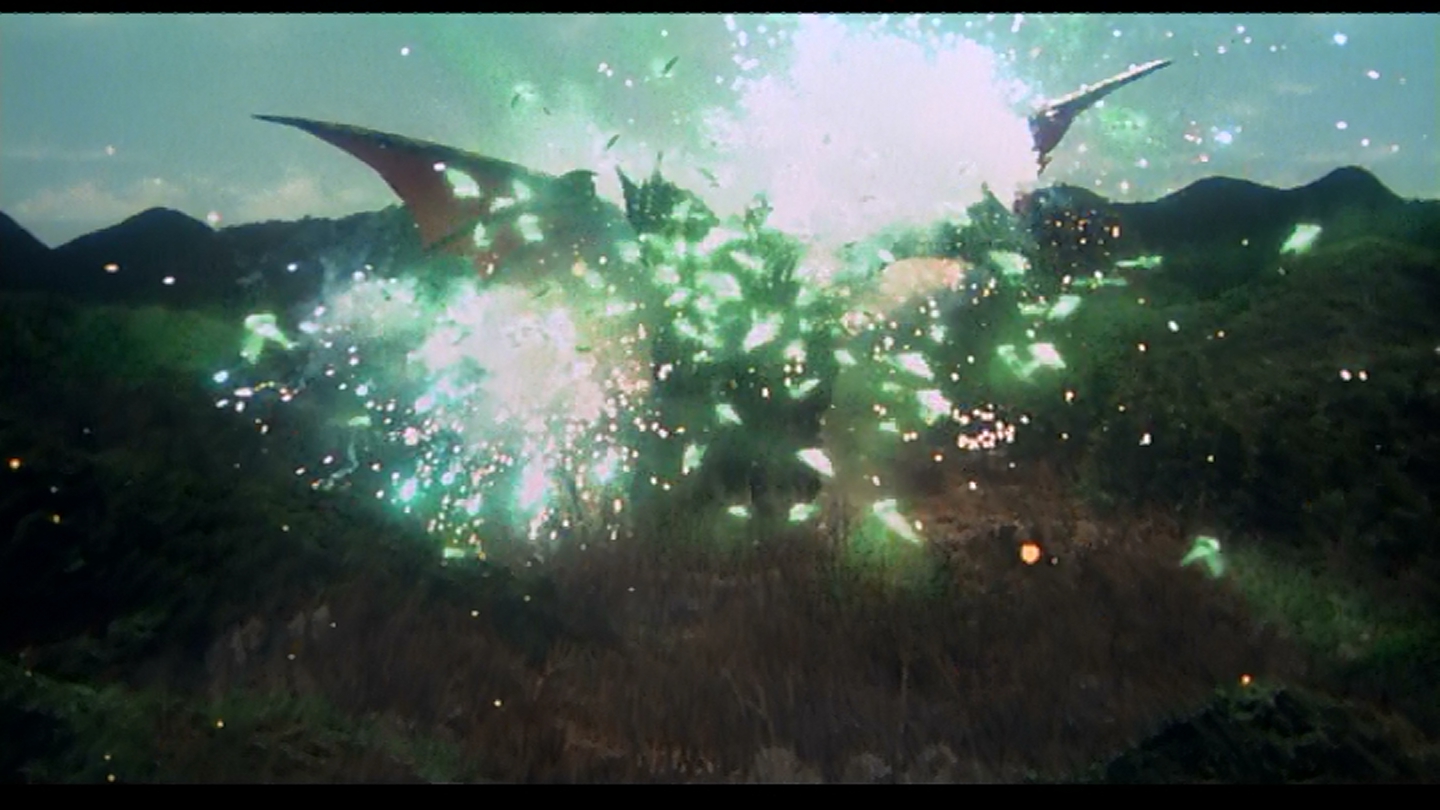
I wasn't looking forward to this film because the first thirs is so kiddie-film bad. And once again, the dubbing is a major problem. I look forward to the subtitles Blu-Ray. But once the action gets going, and the script begins to focus on the monsters rather than the humans, this film is poignant, fun, and entertaining. If you're going to watch this, I'll totally suggest starting at Chapter 11. You won't miss much, and you won't hate the kids.
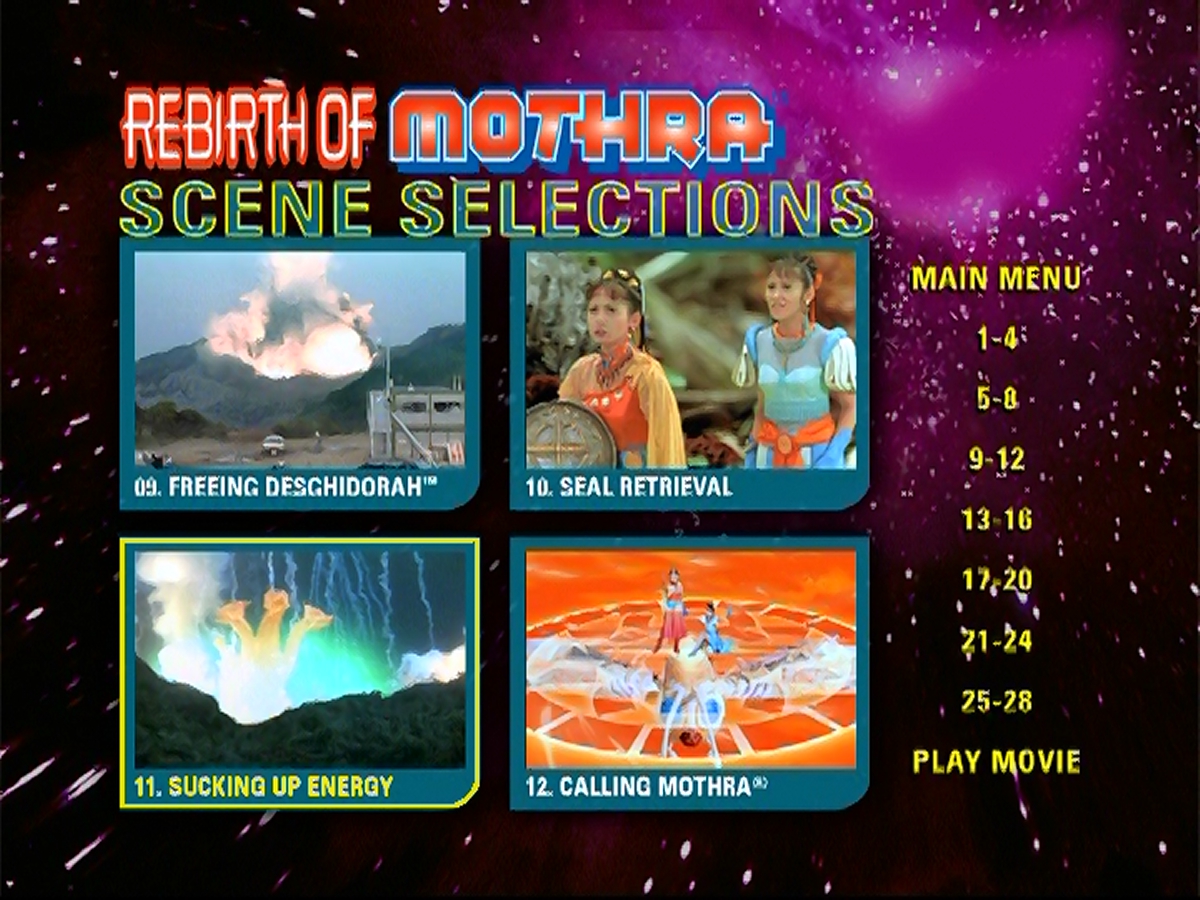
And since one of the major portions of My Year of Monsetrs is to poijnt out how these films are connected to each other, I should mention that director Okihiro Yoneda was a second unit director to Akira Kurosawa's later films, such a Dreams, Rhapsody in August, and Ran. There is therefore a direct link with Godzilla creator Ishiro Honda, who also worked with Kurosawa on his final films.
Next up, cheapo American production Zarkorr the Invader.
